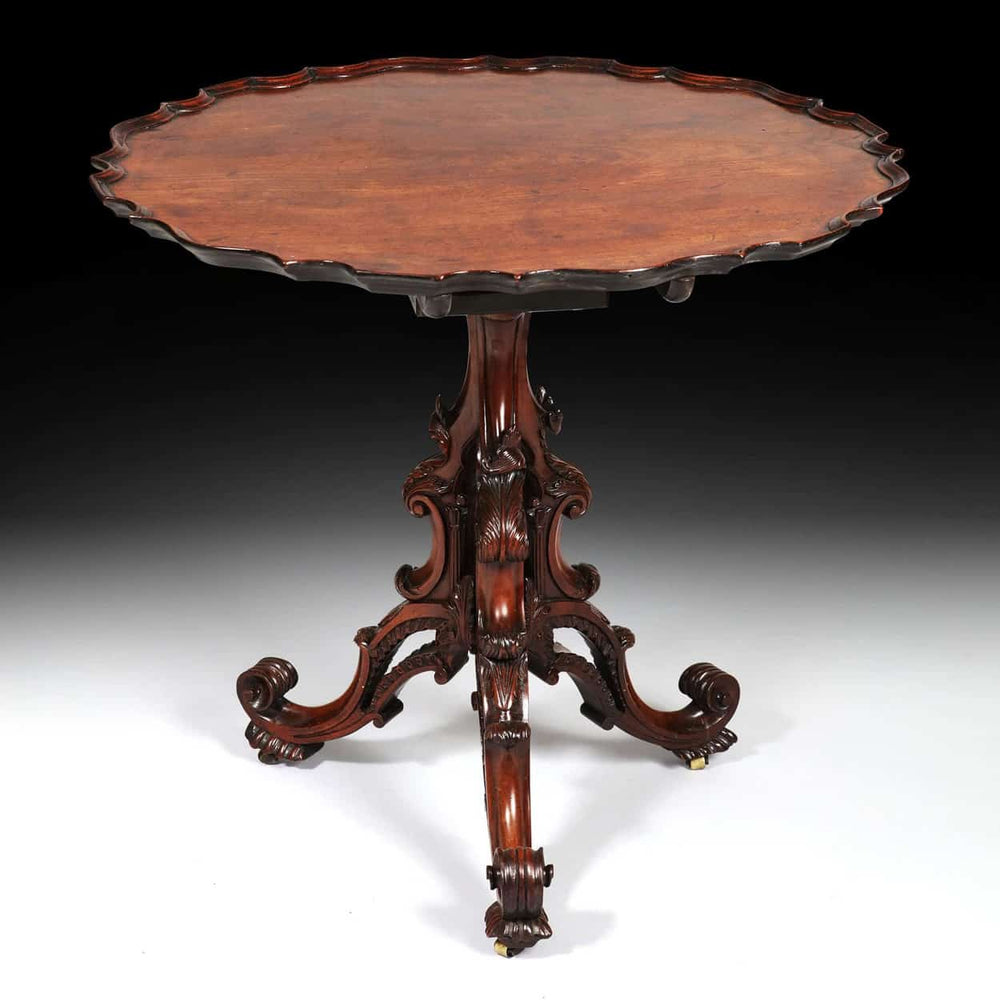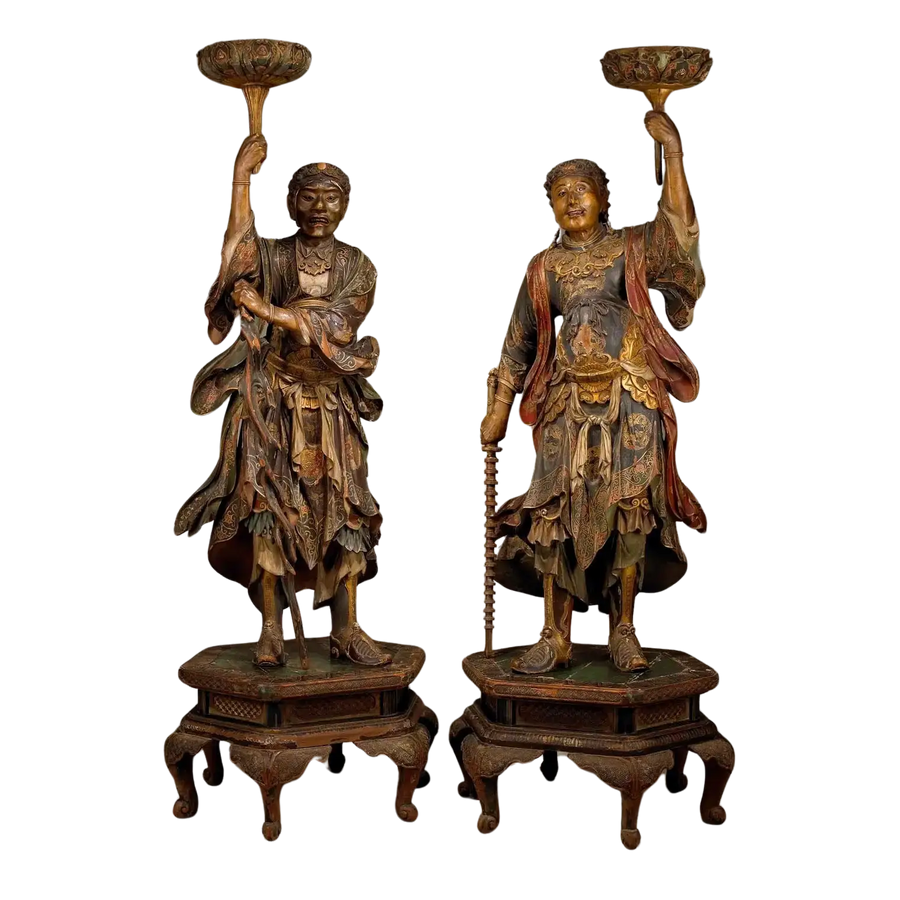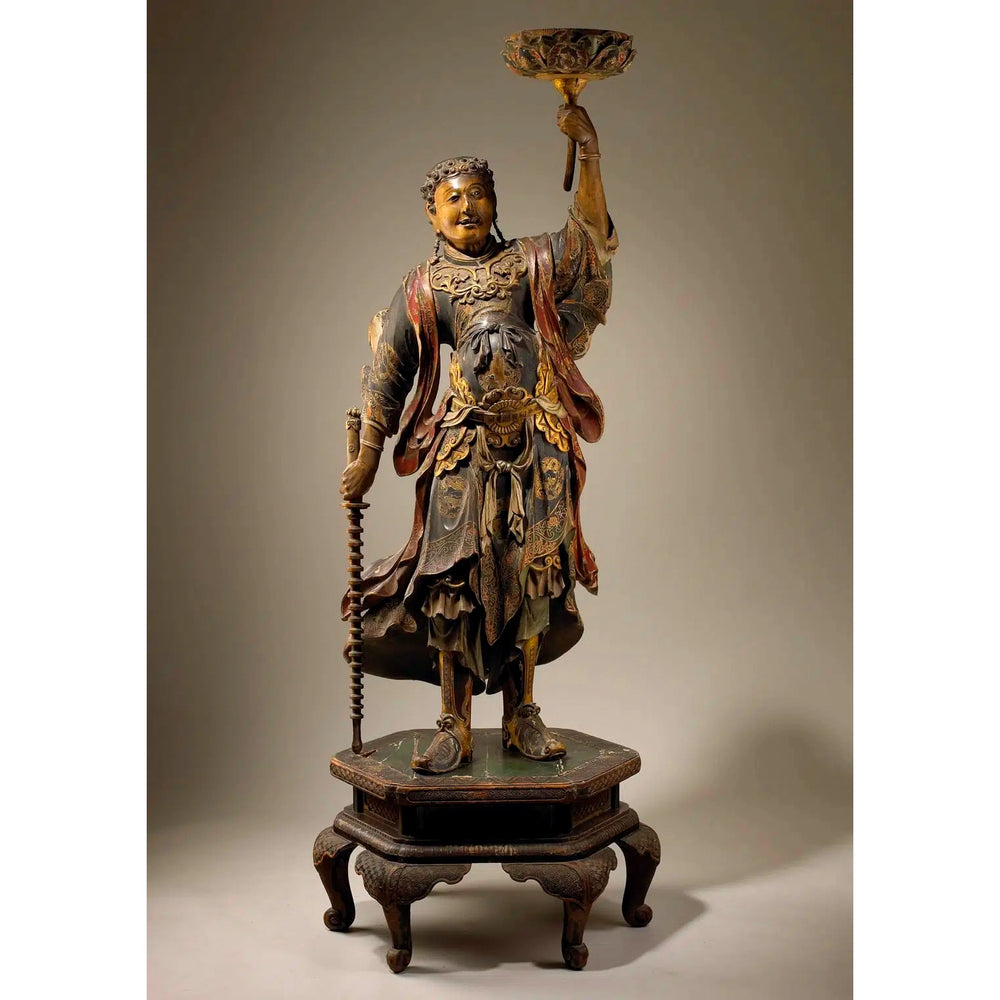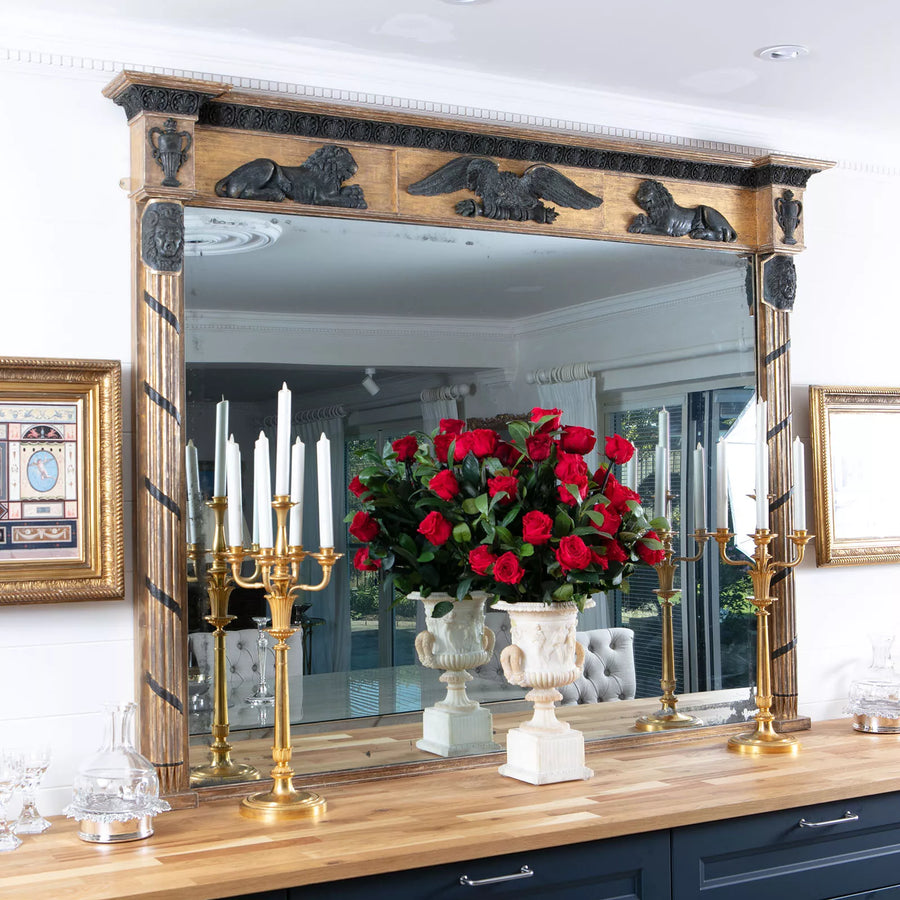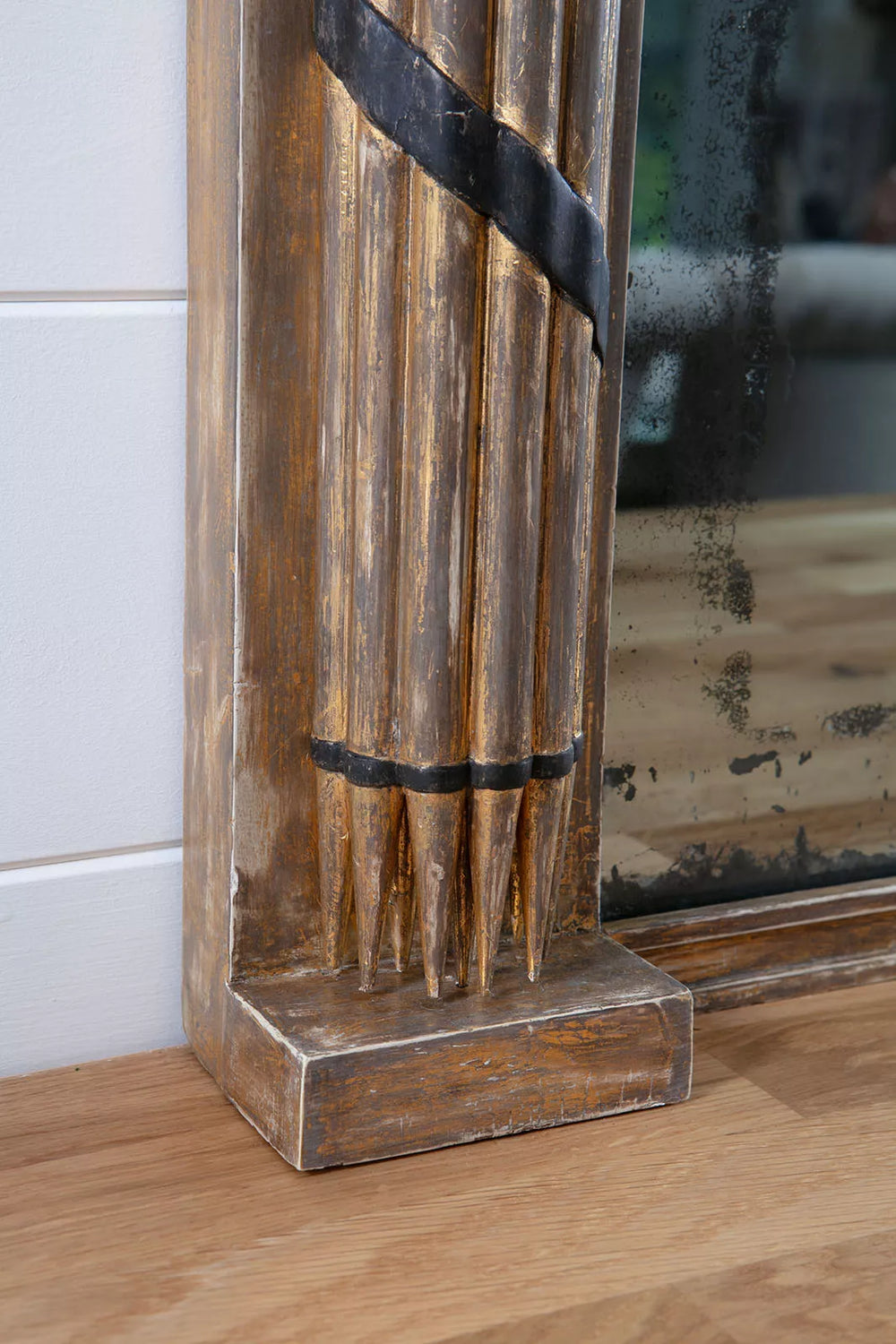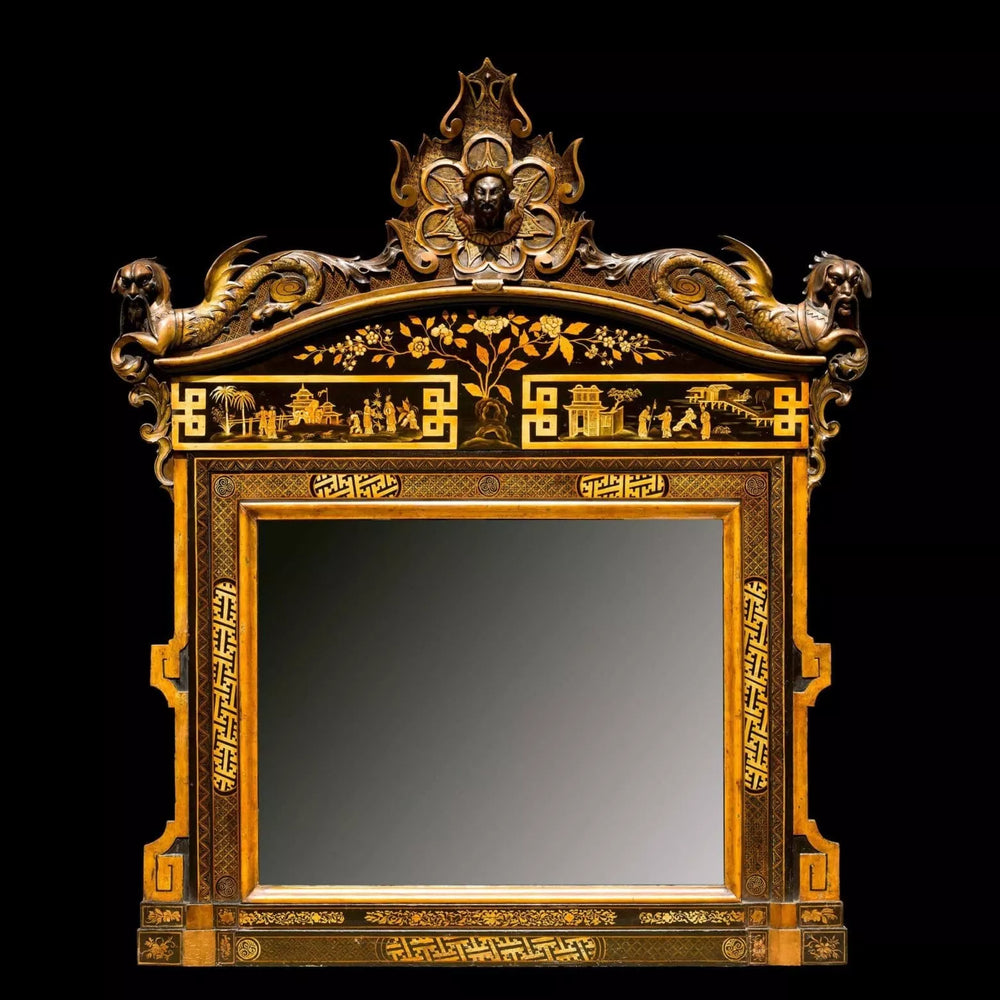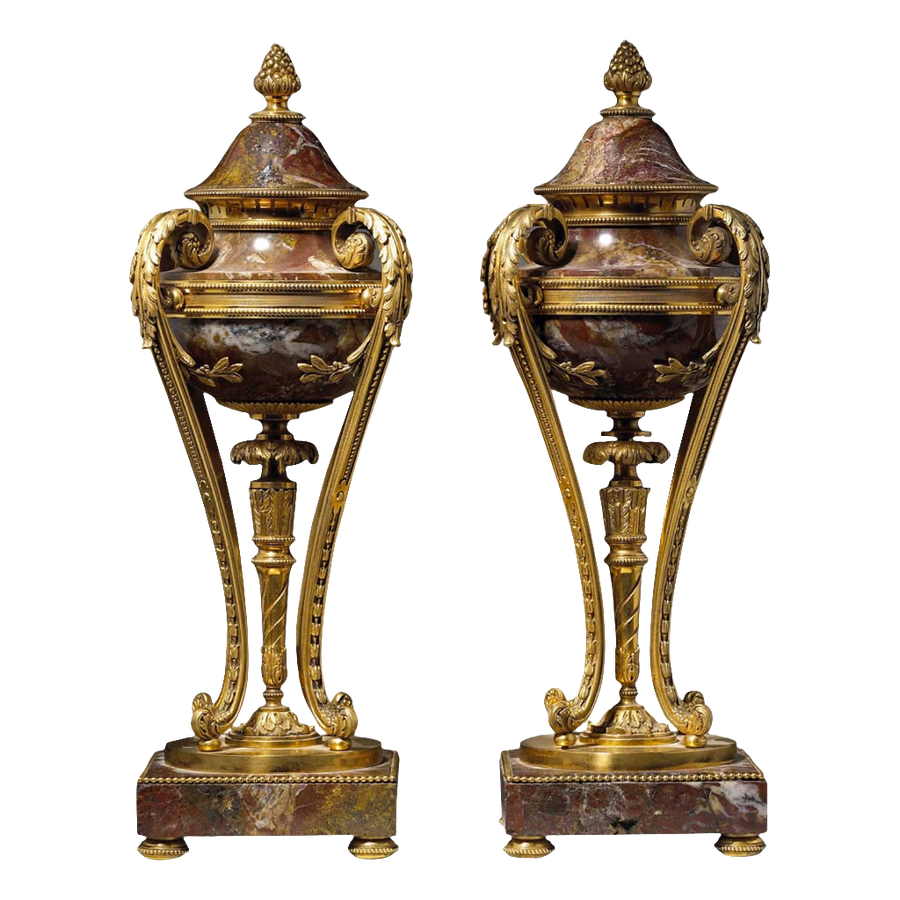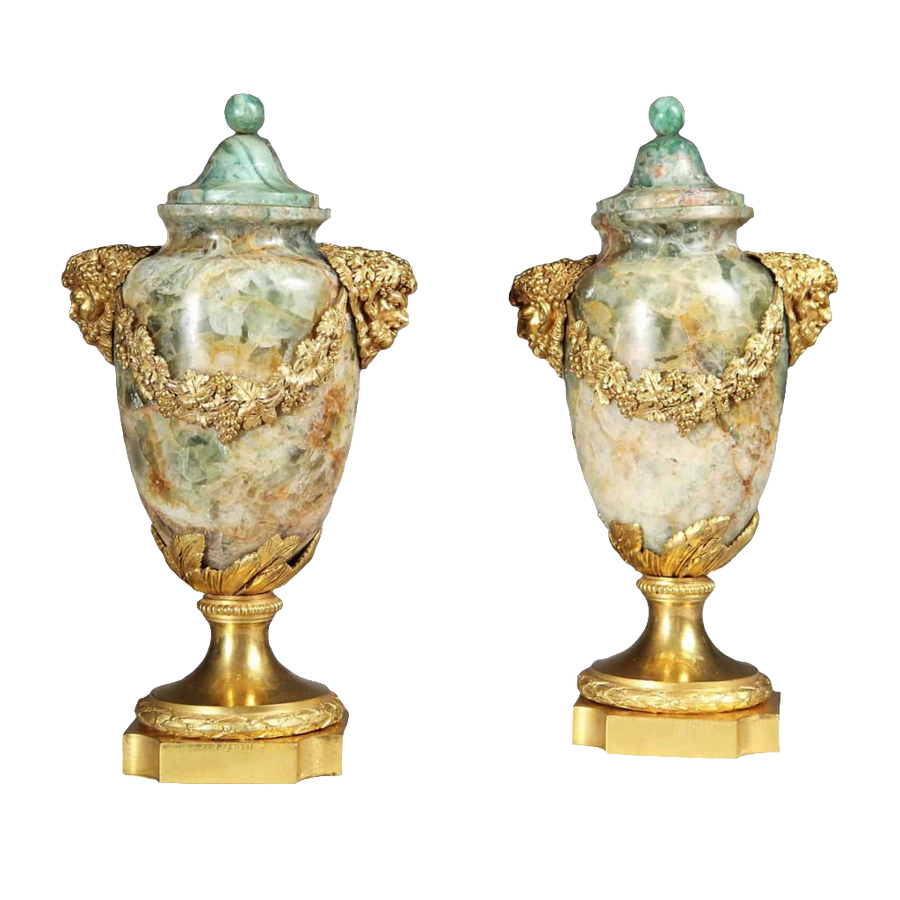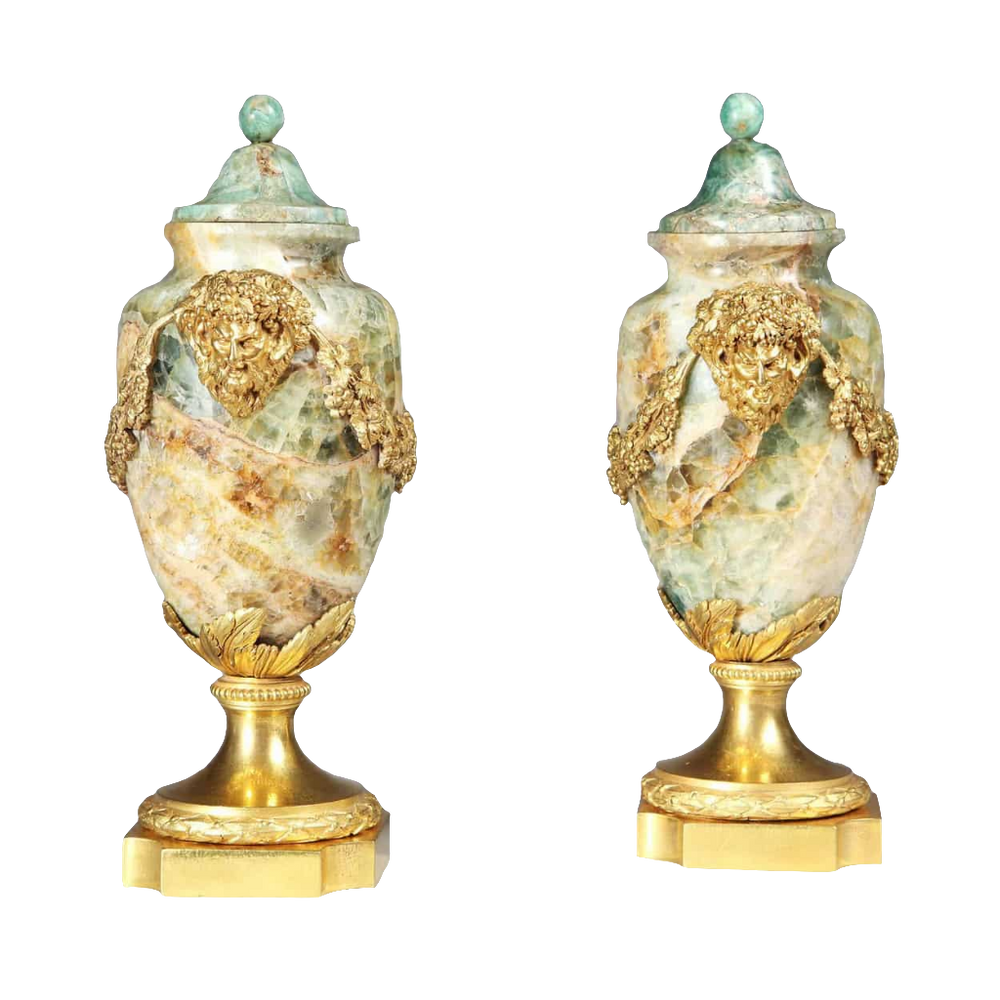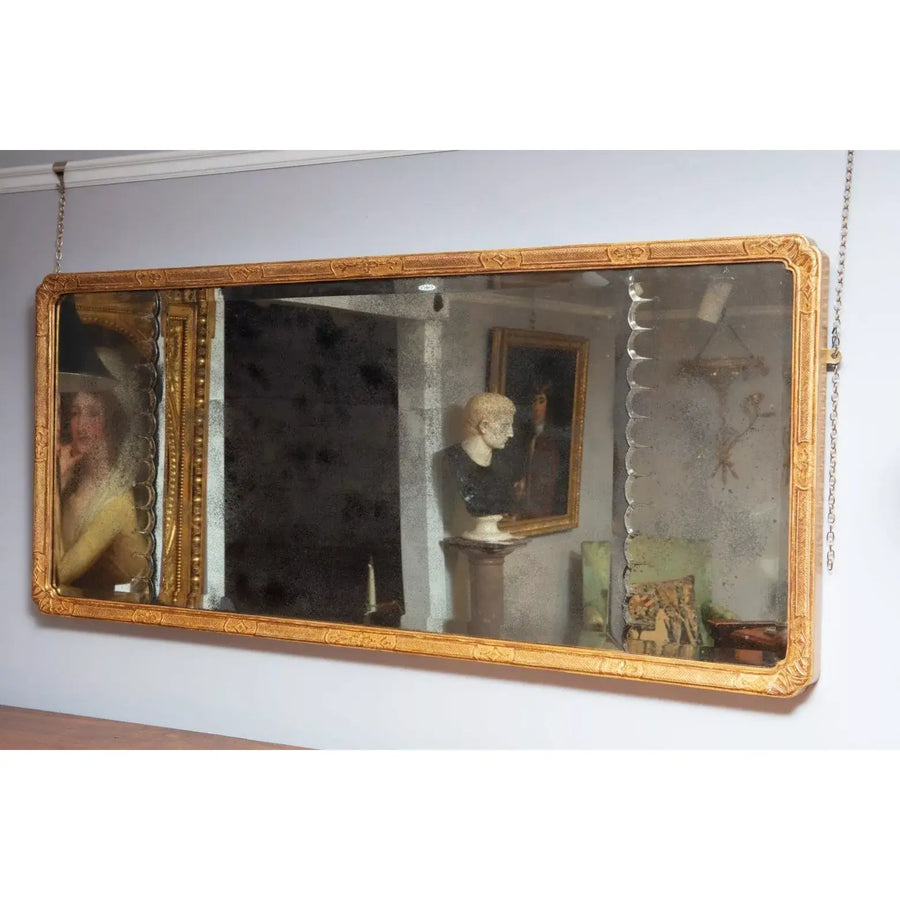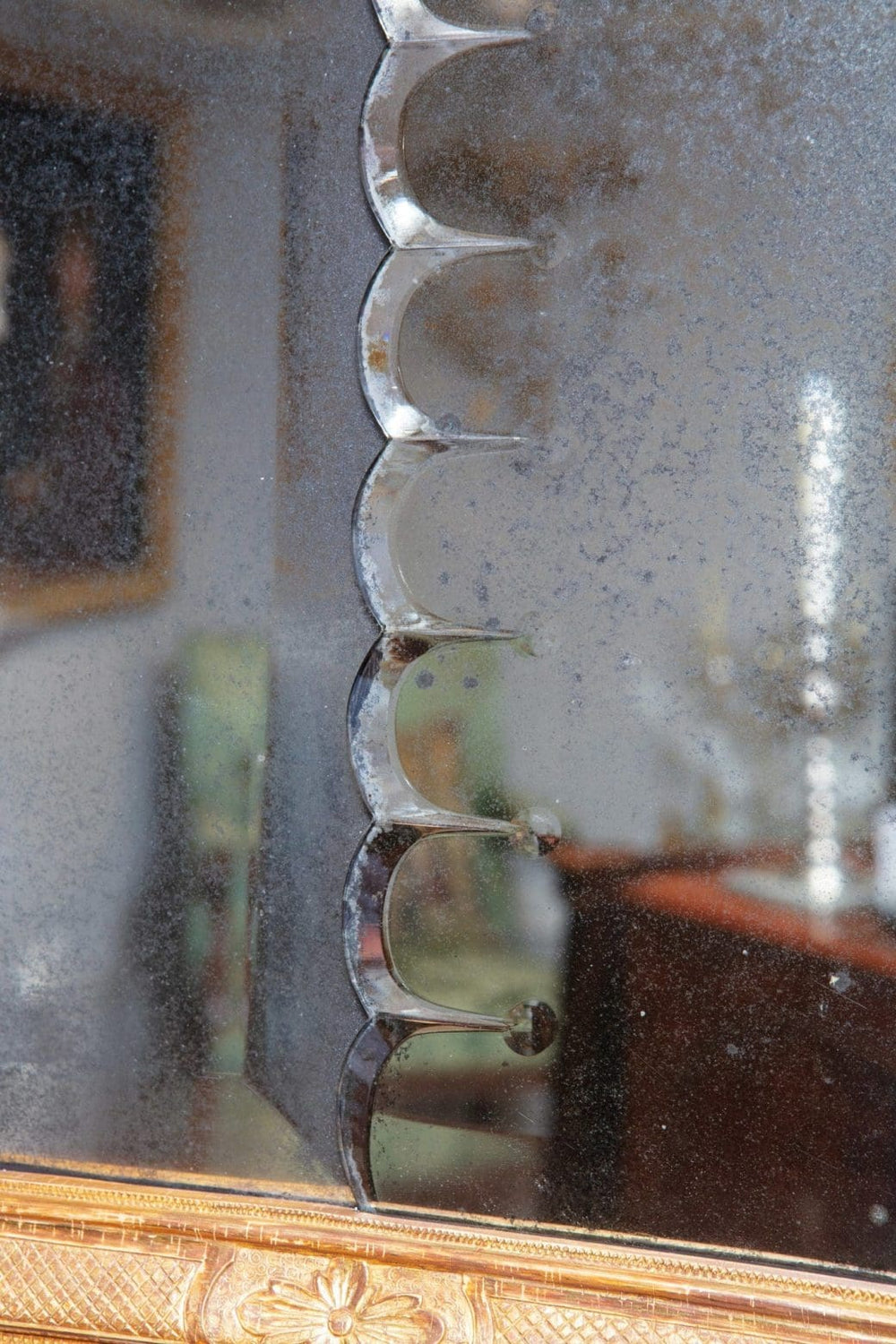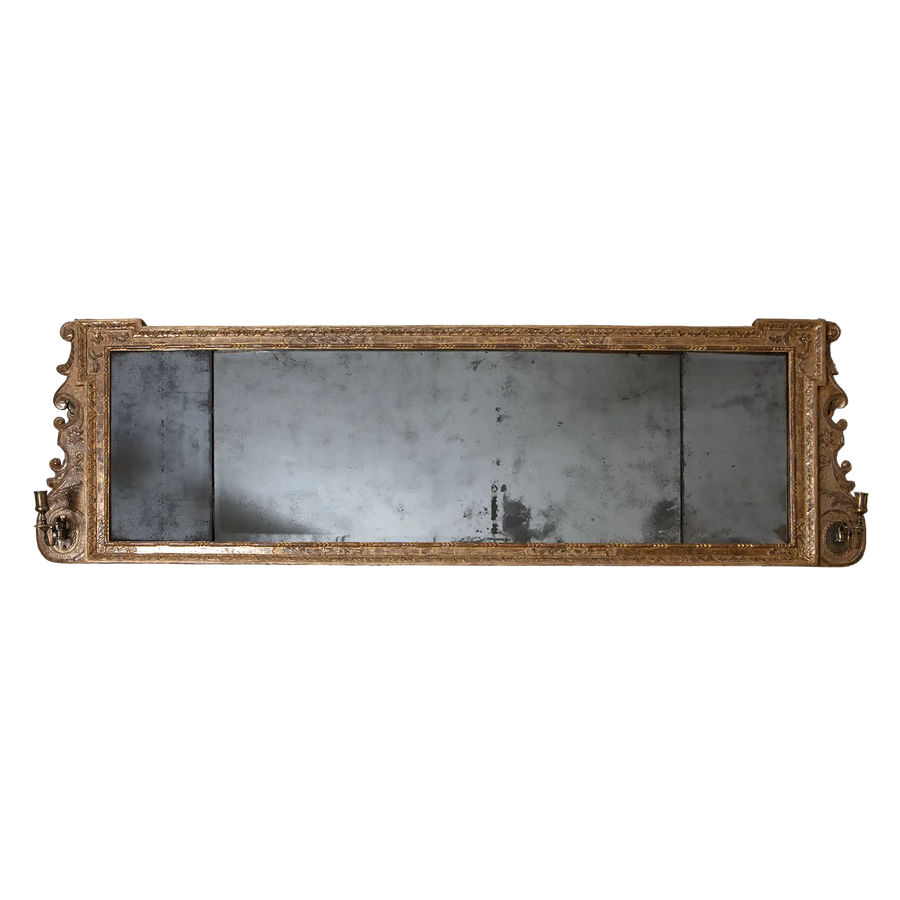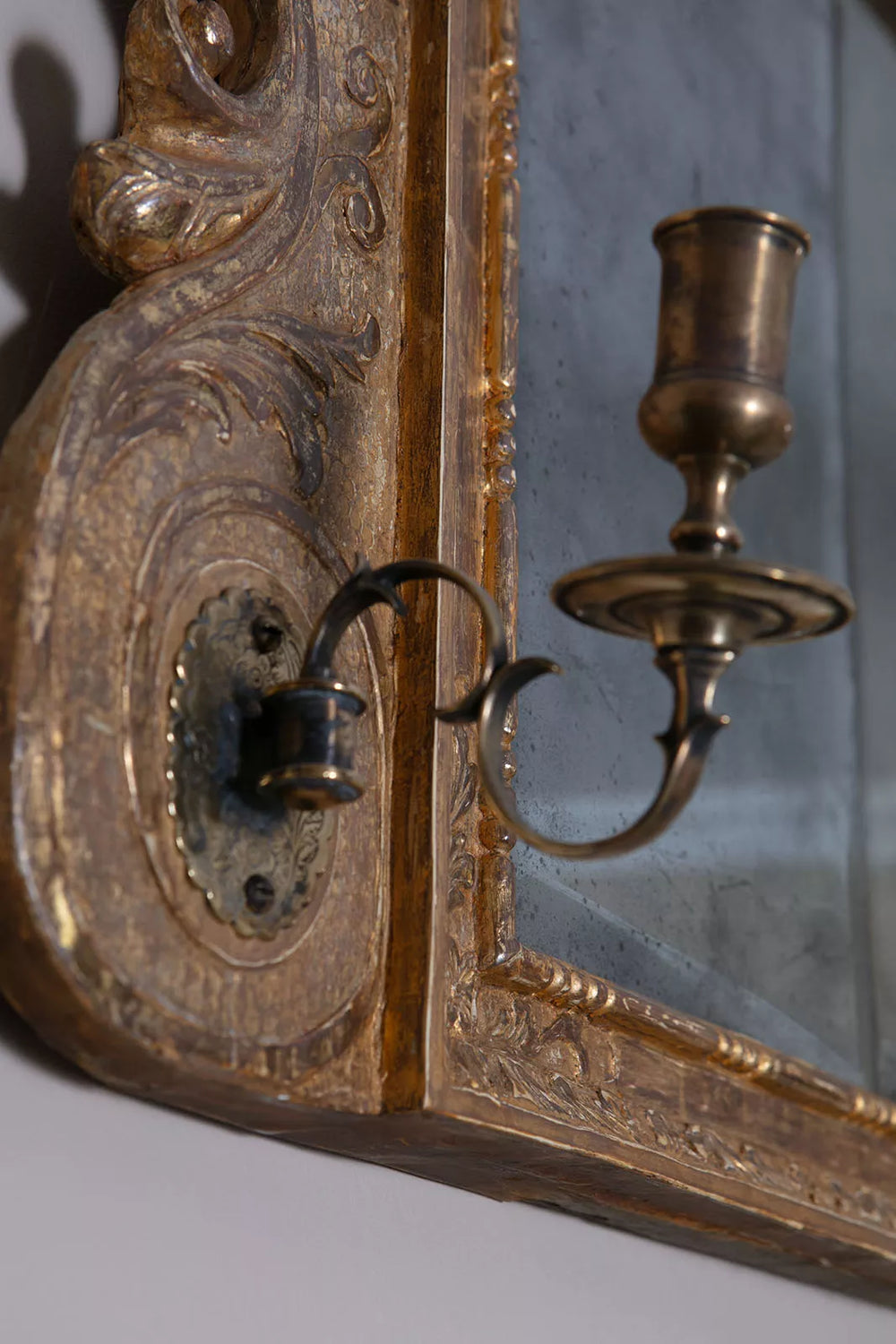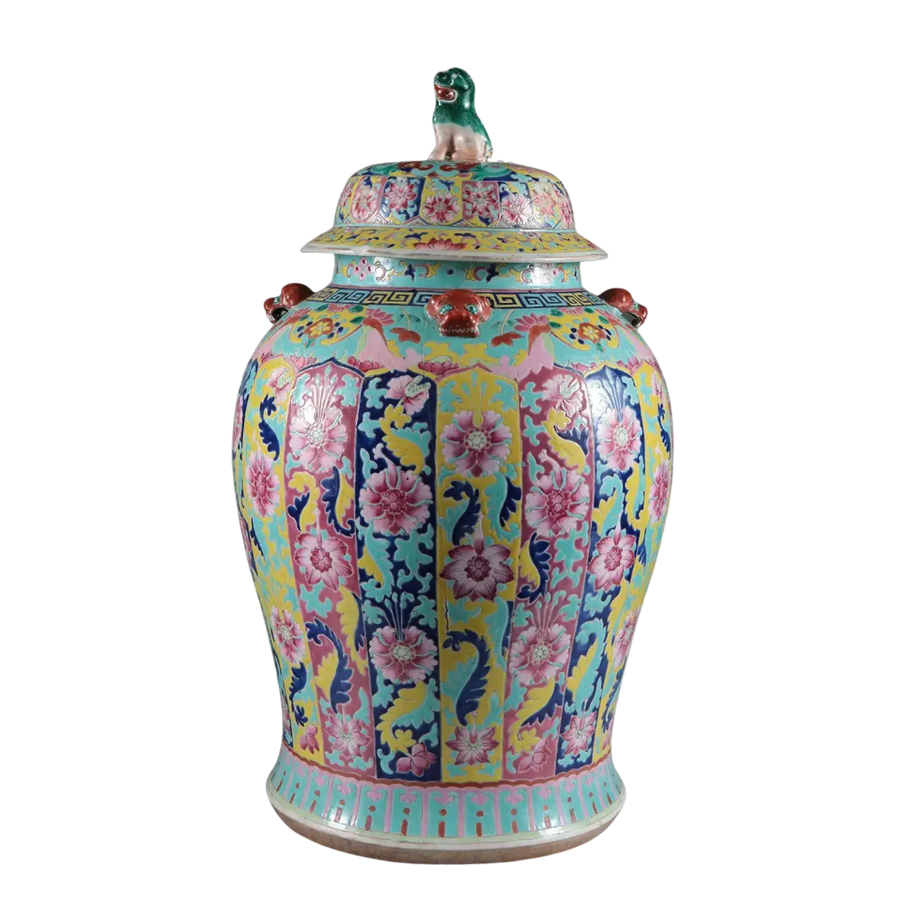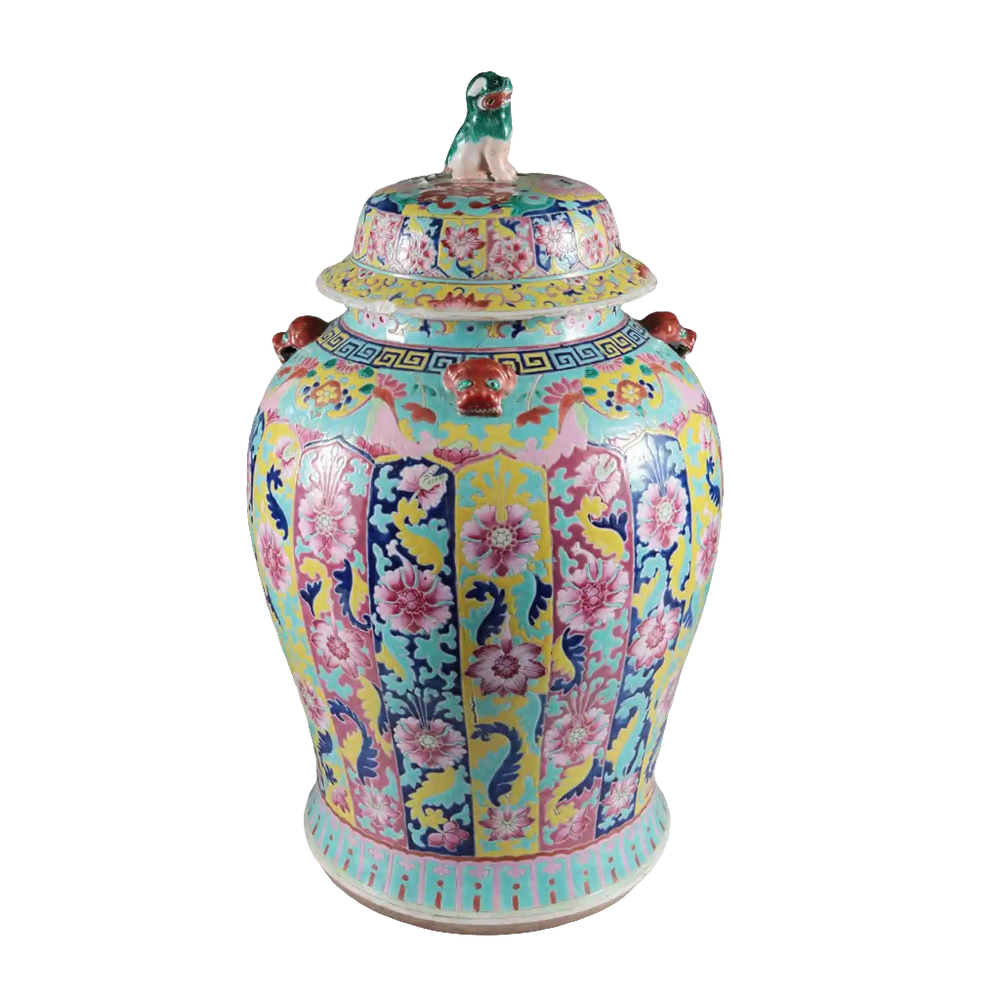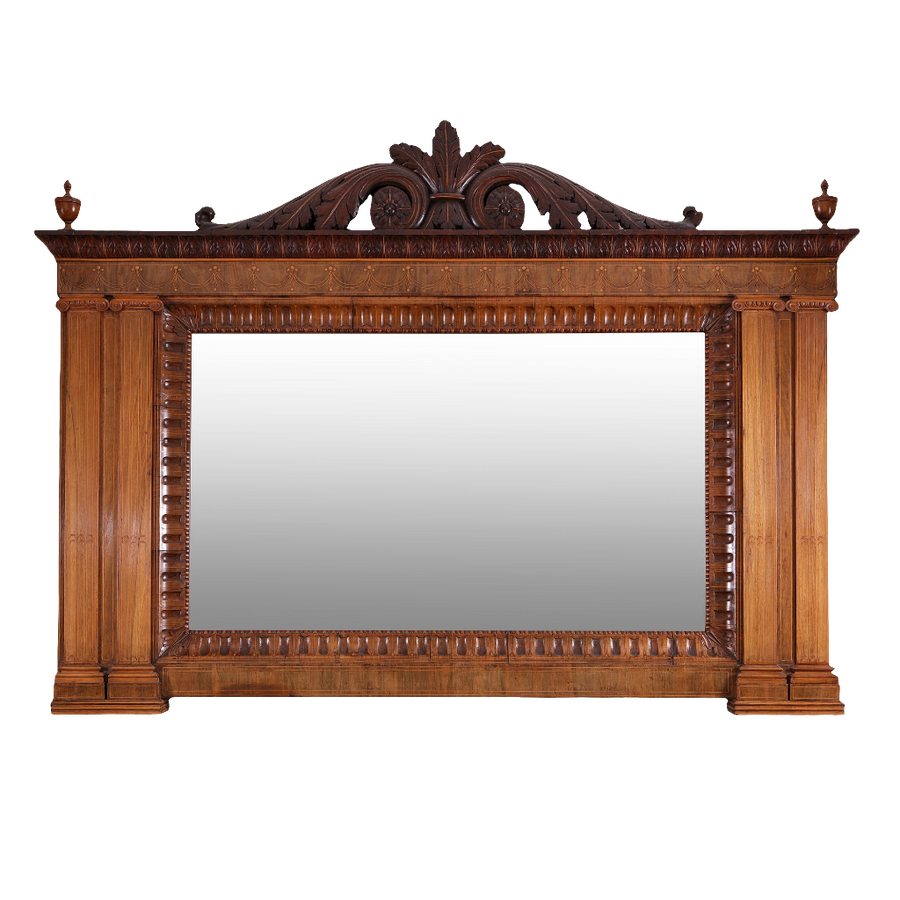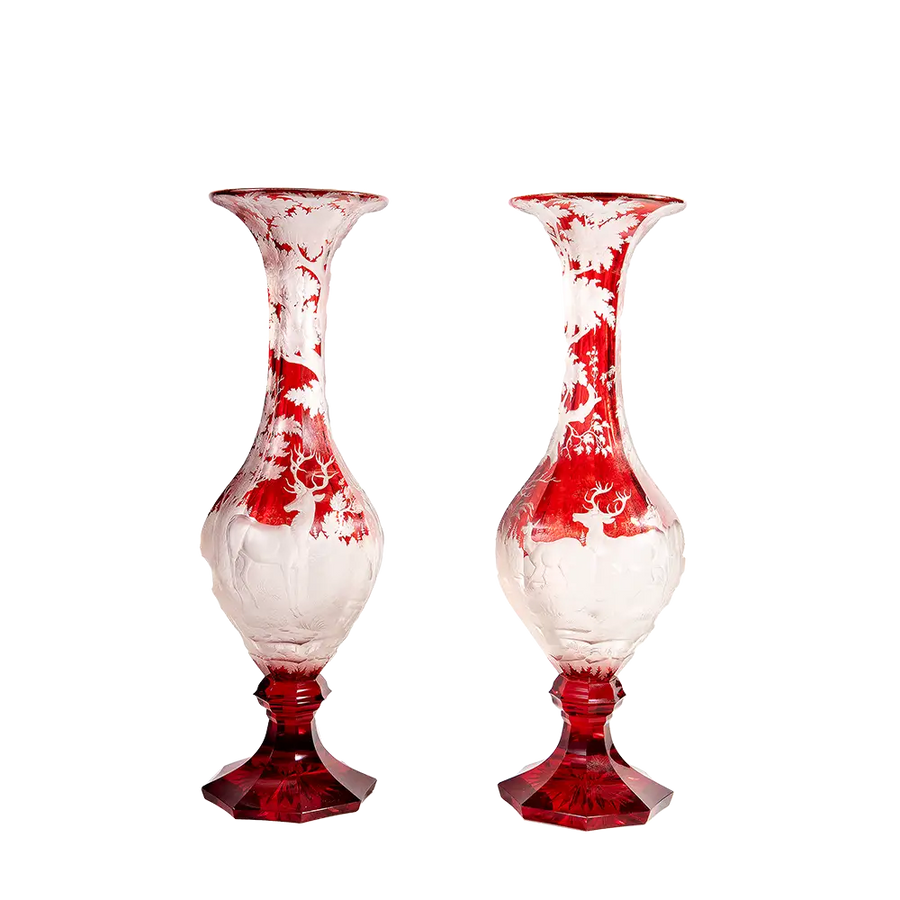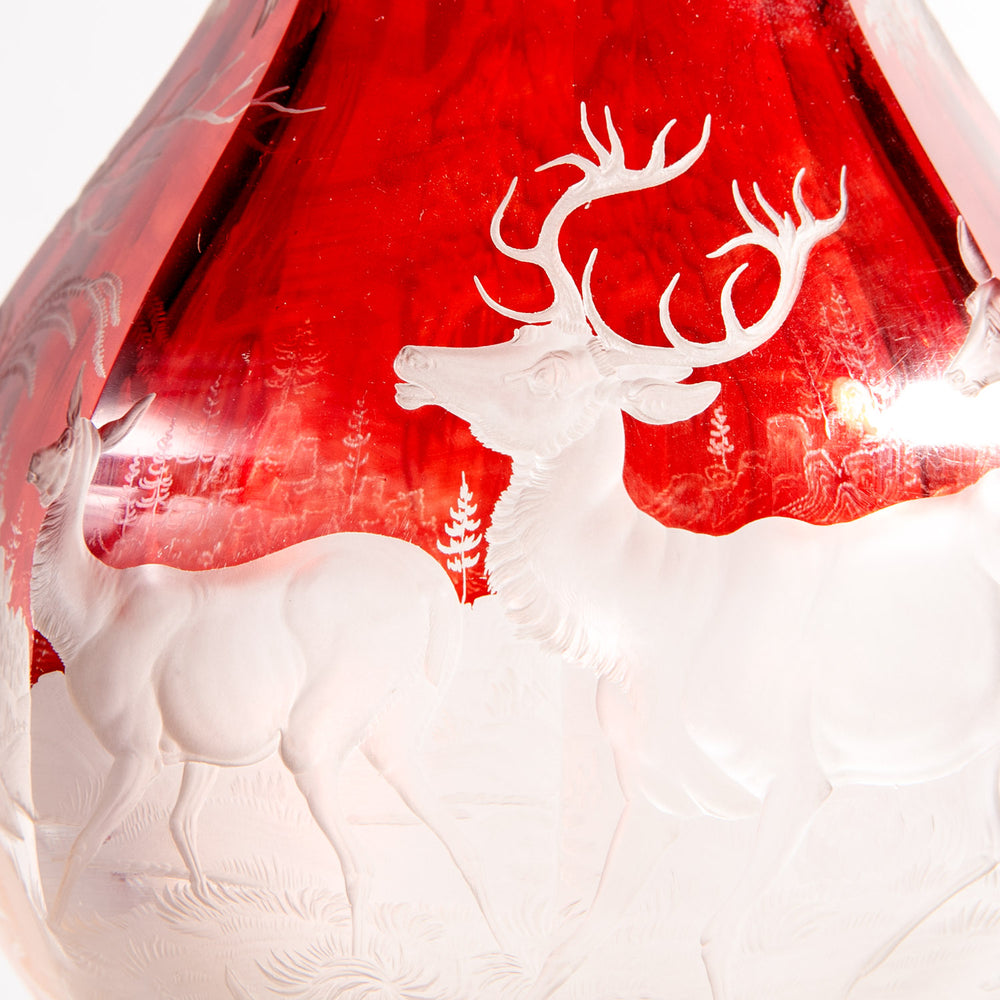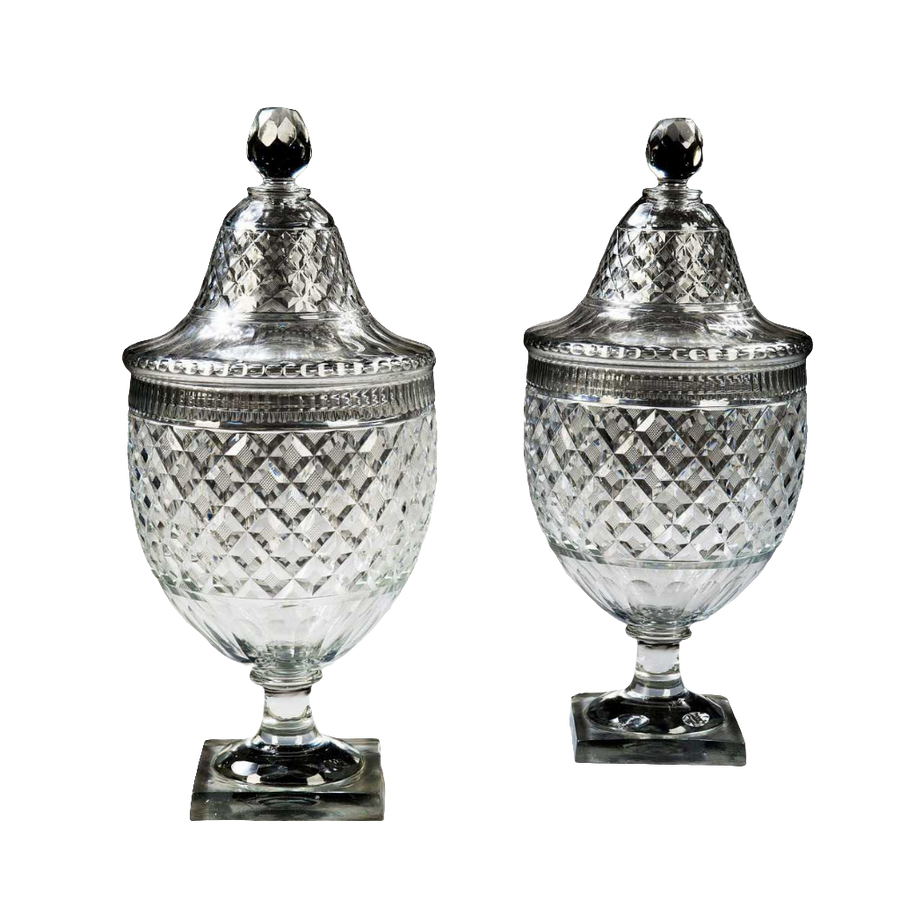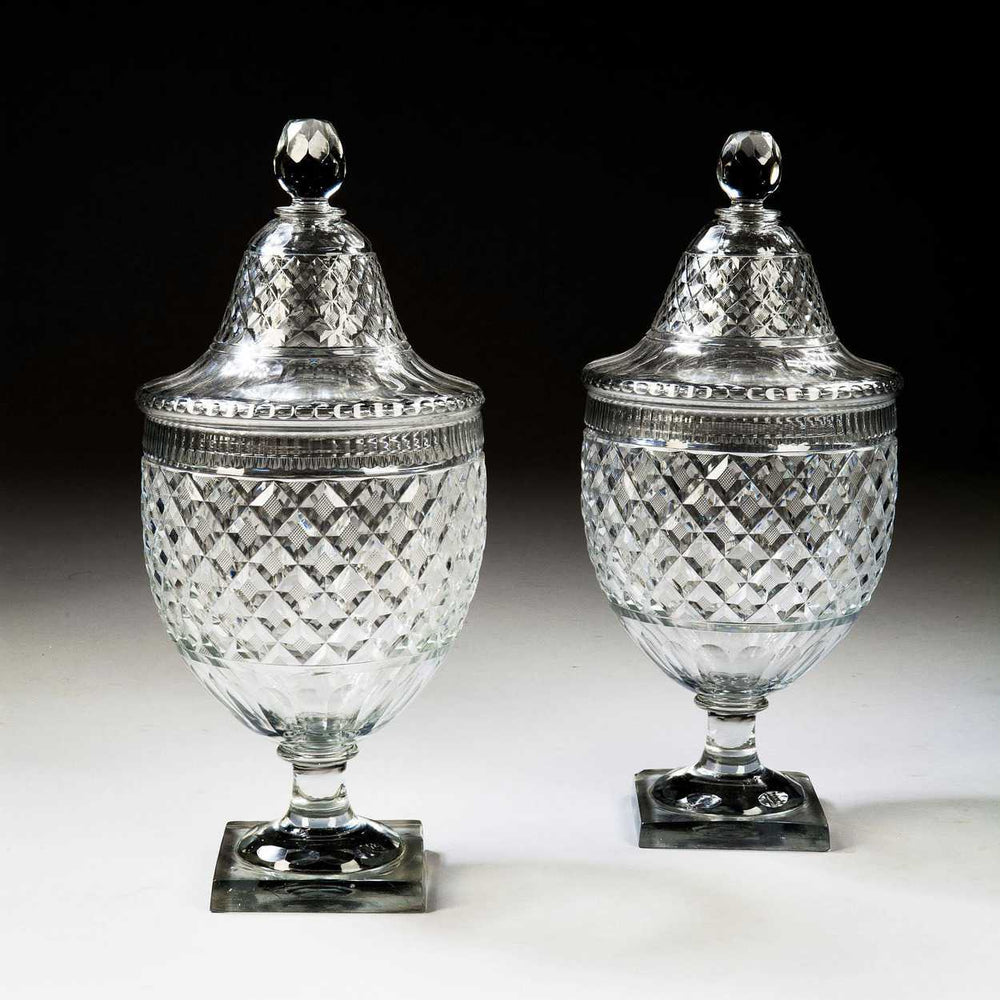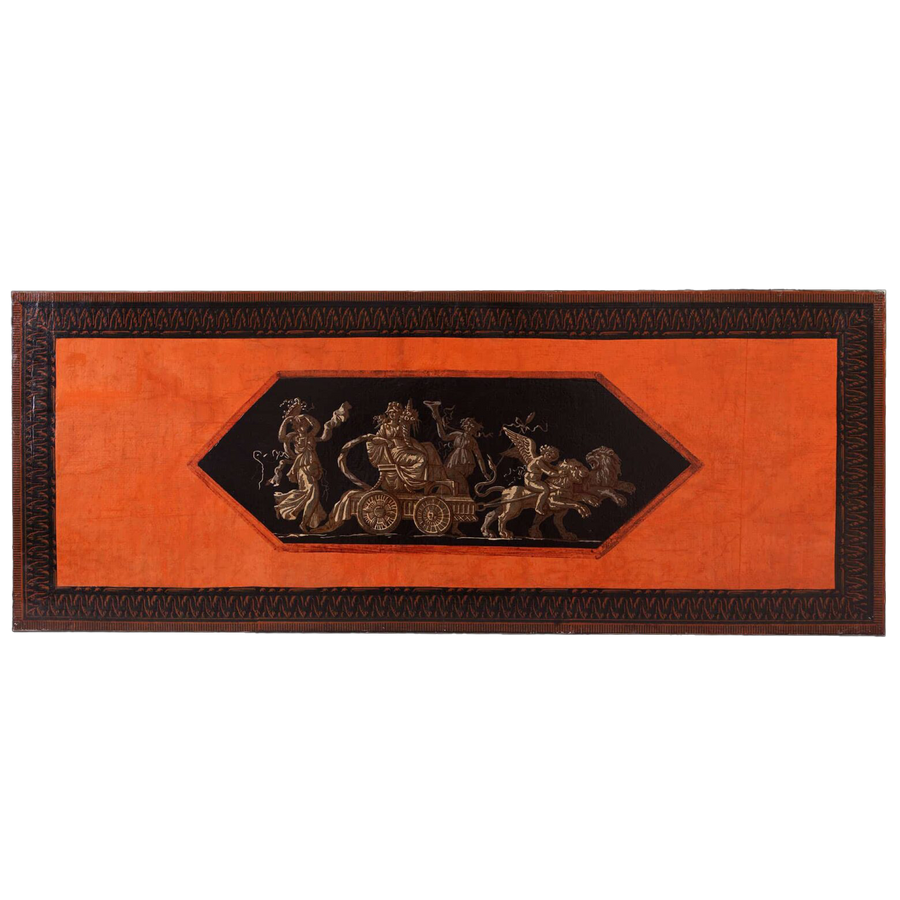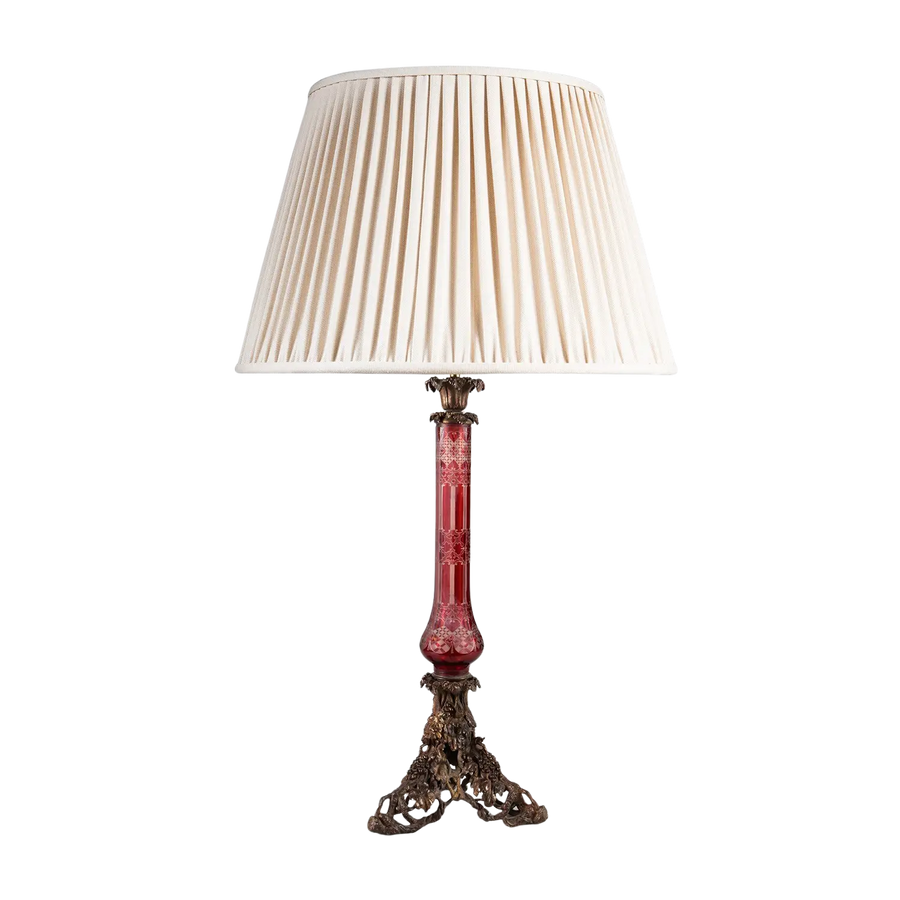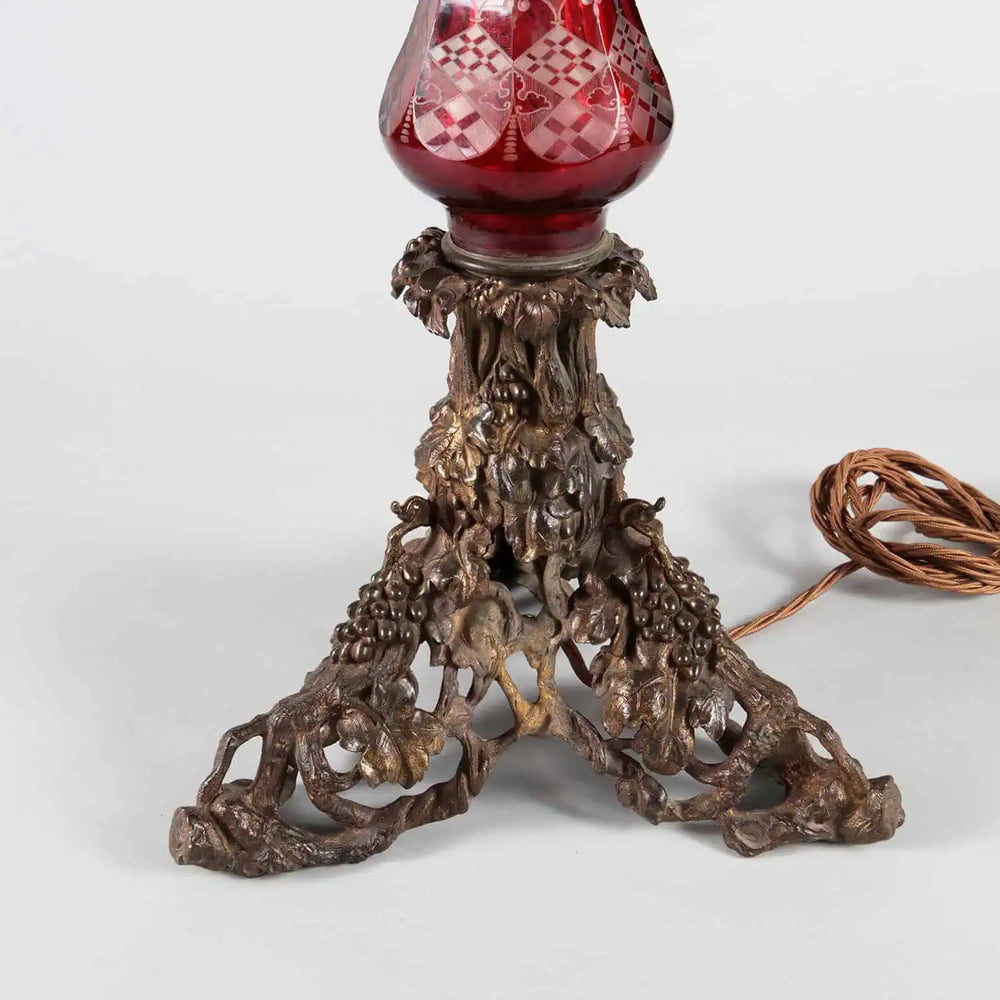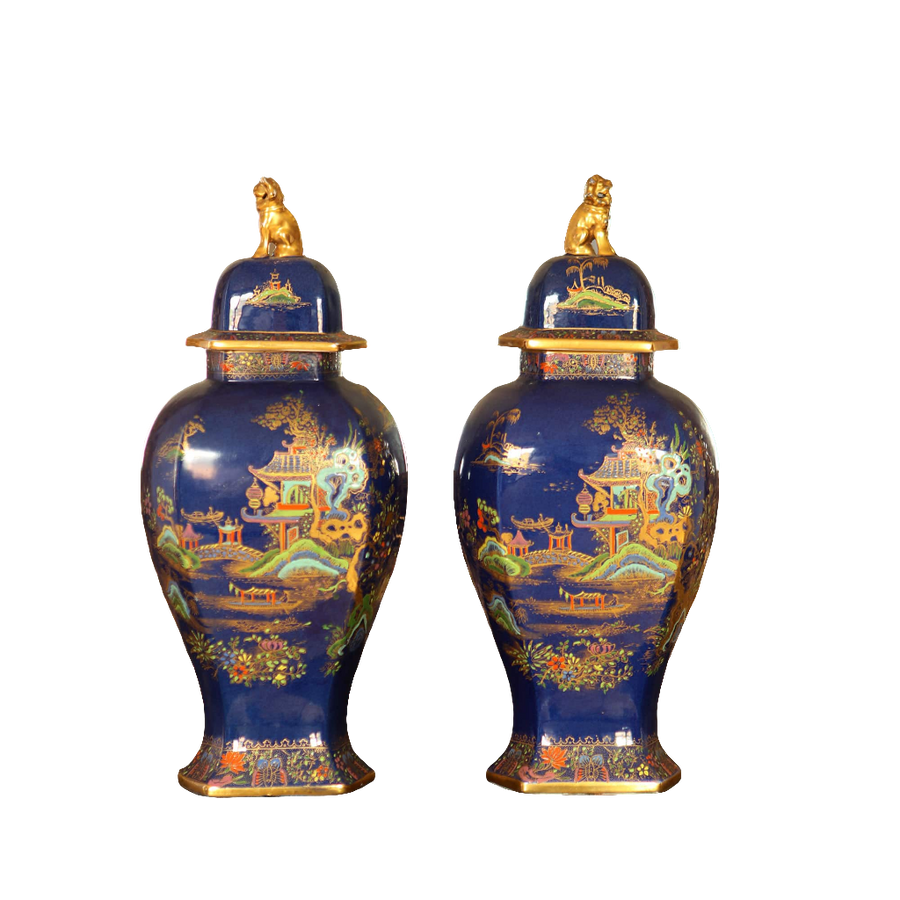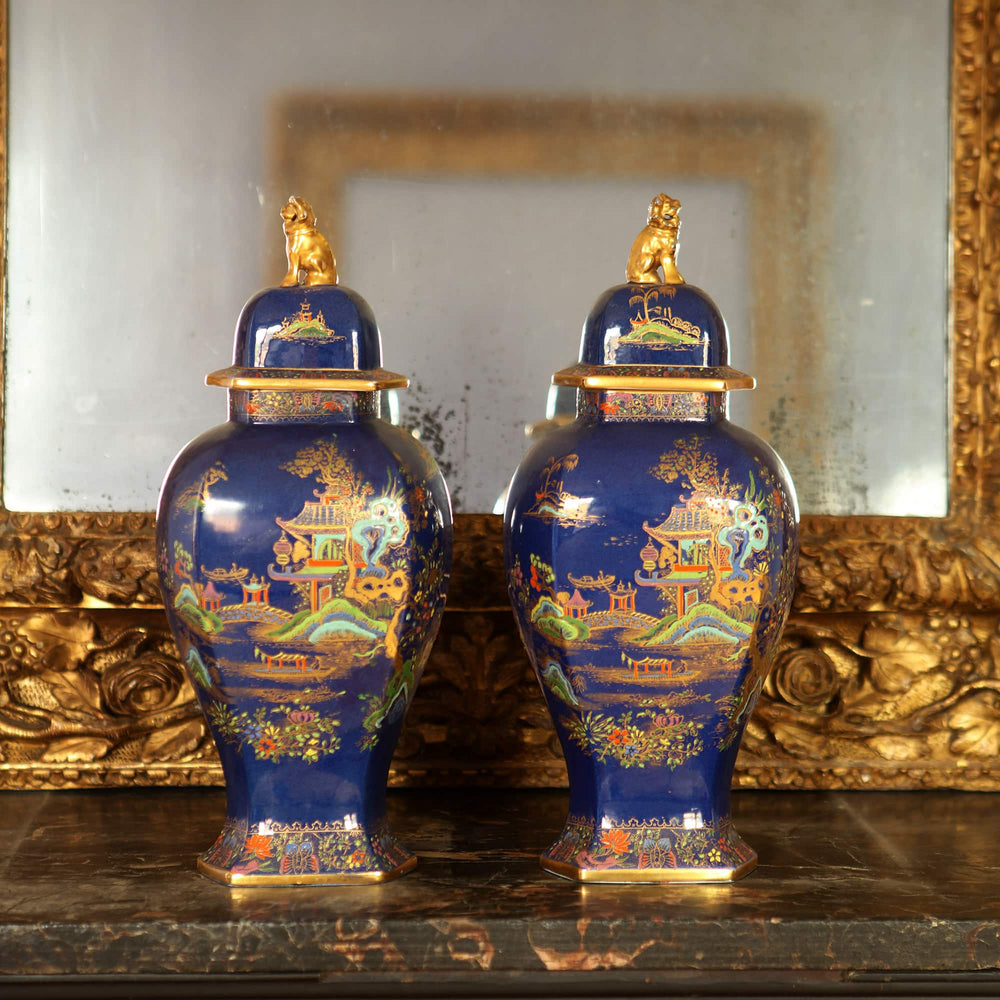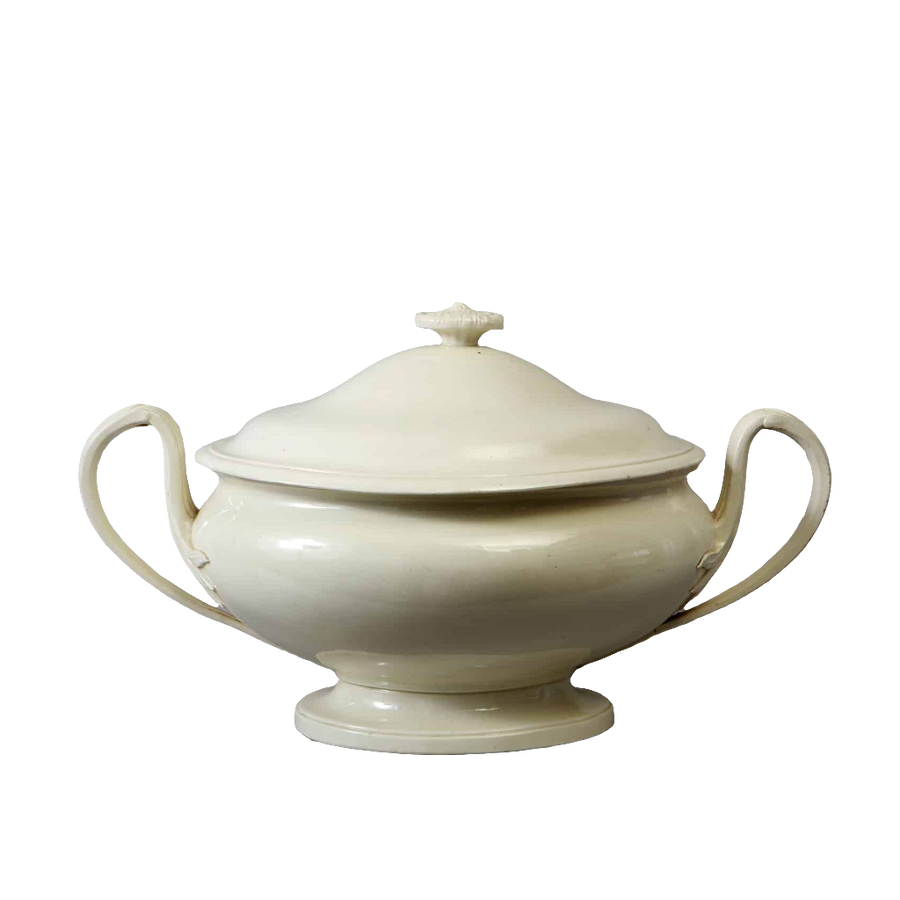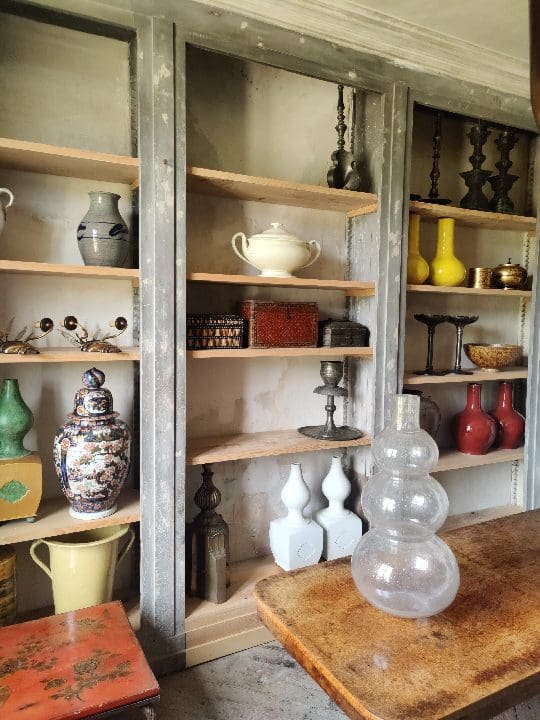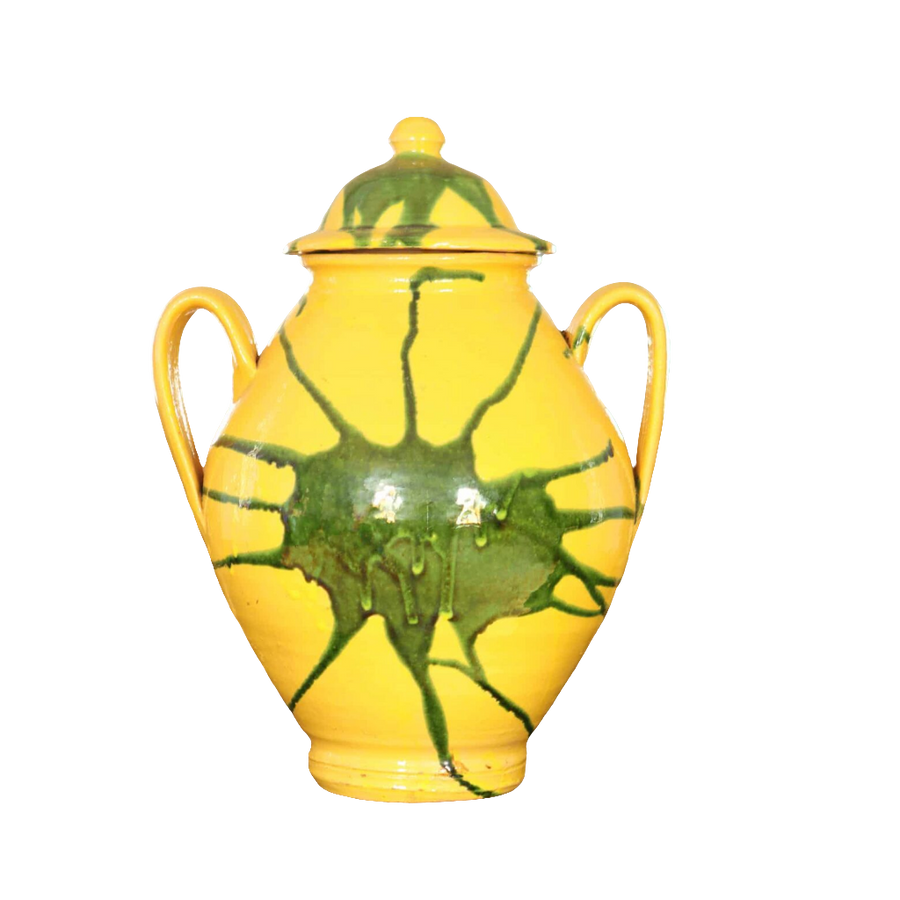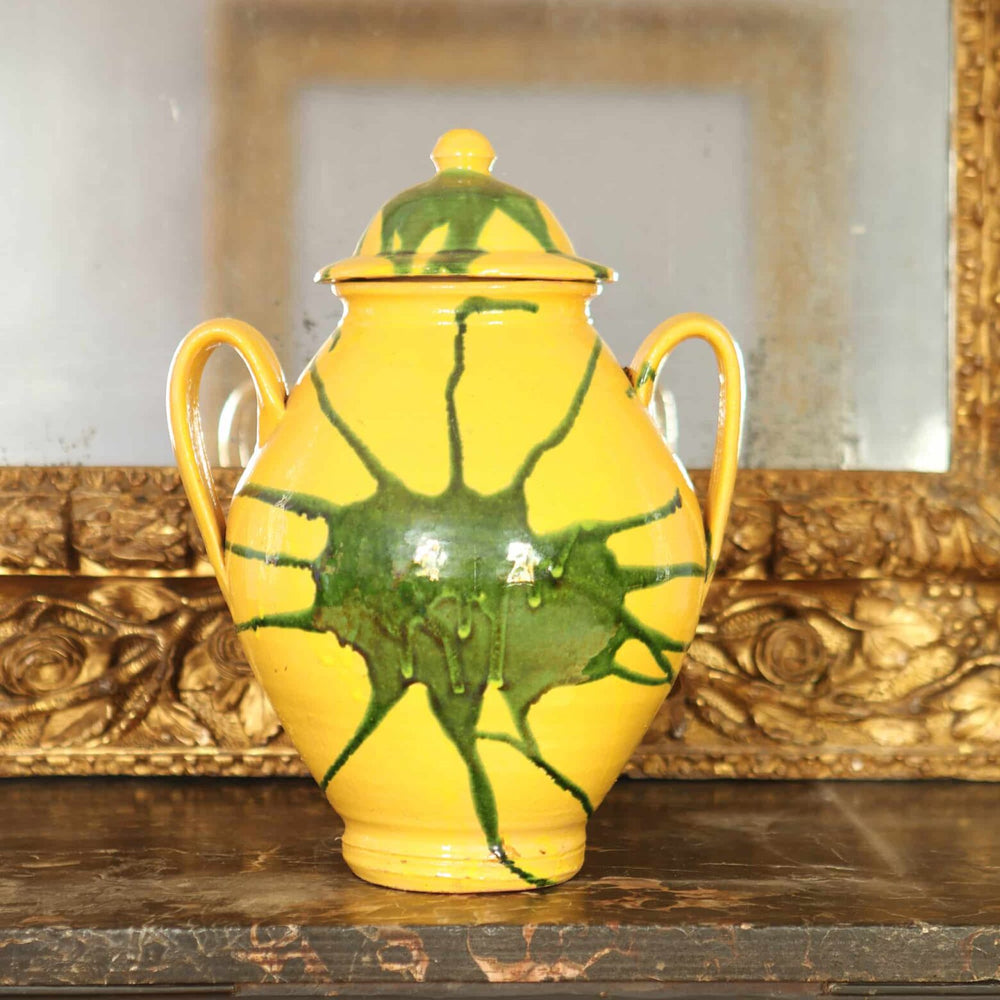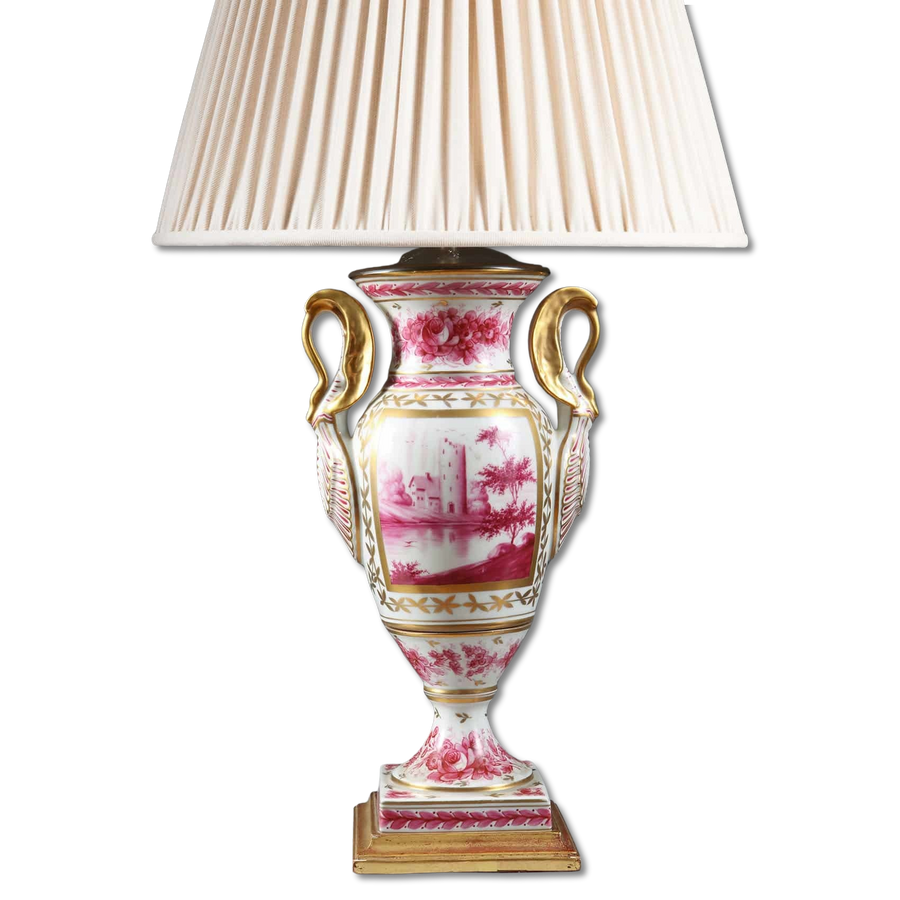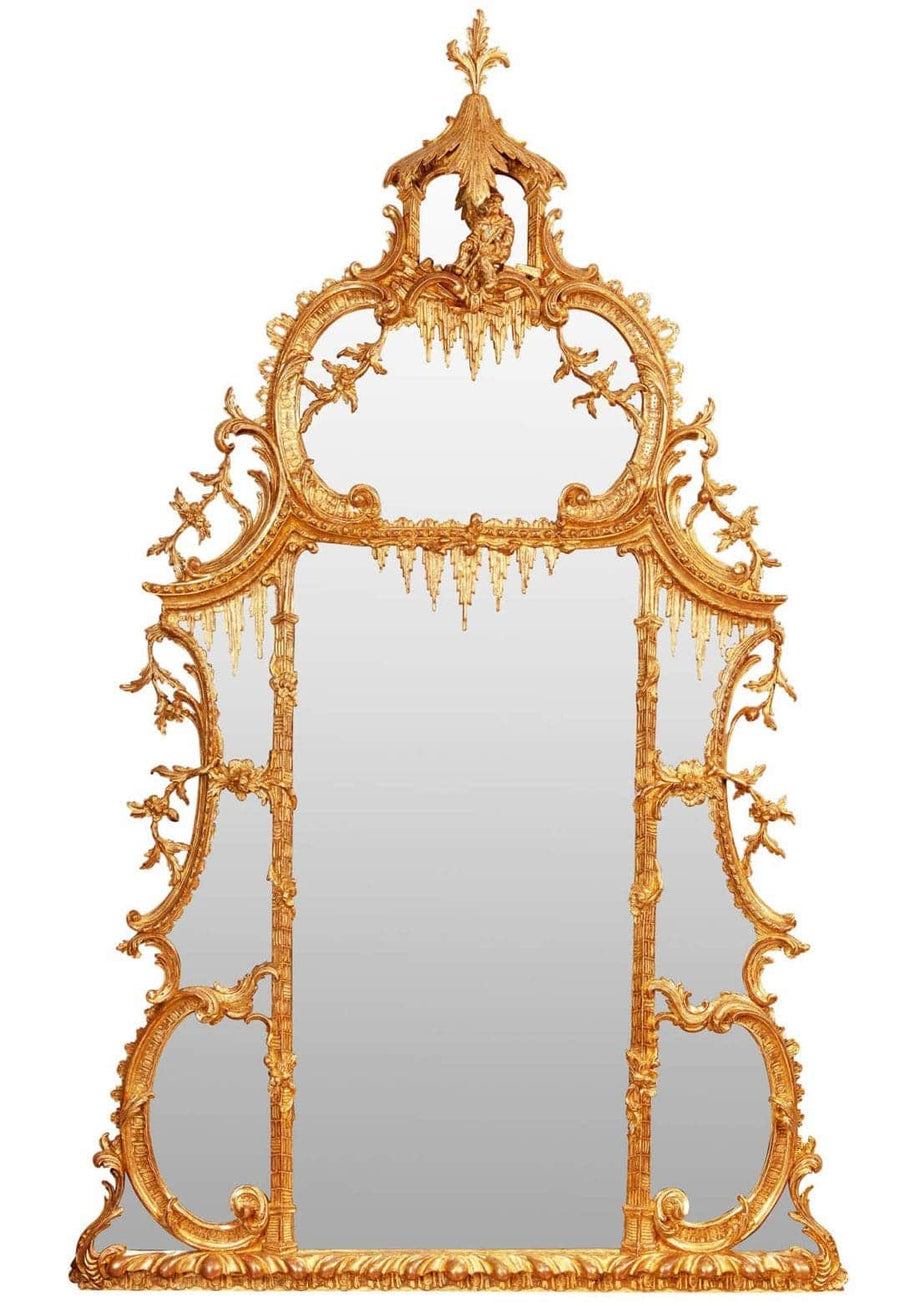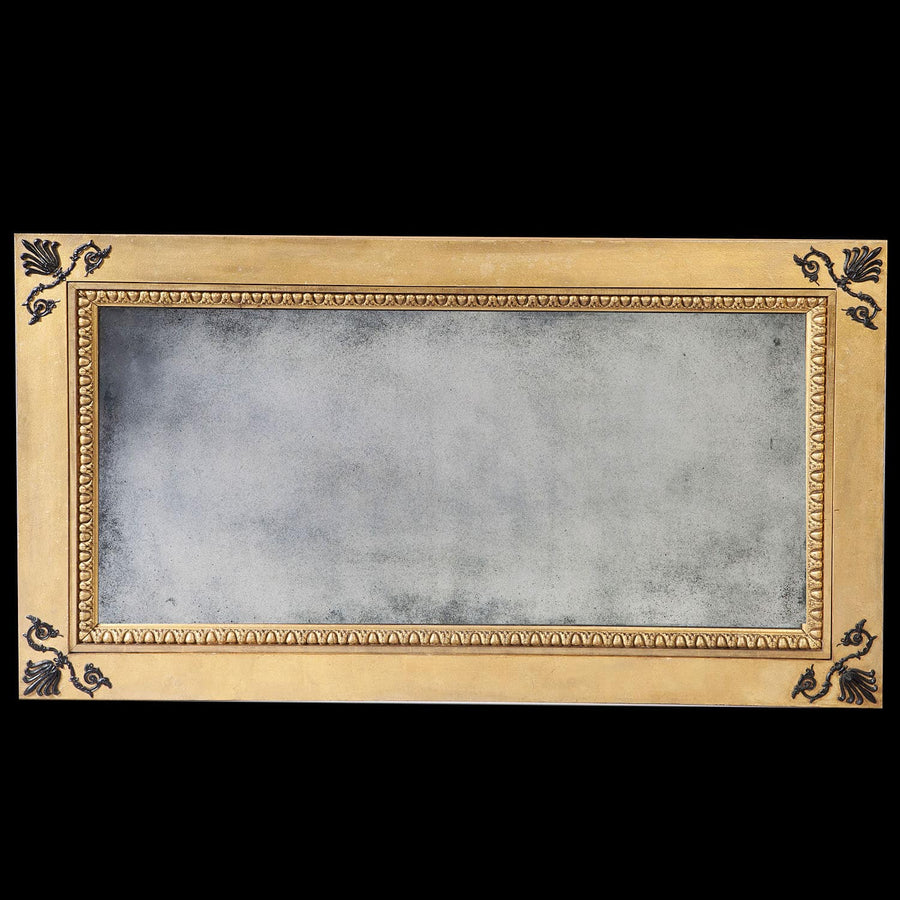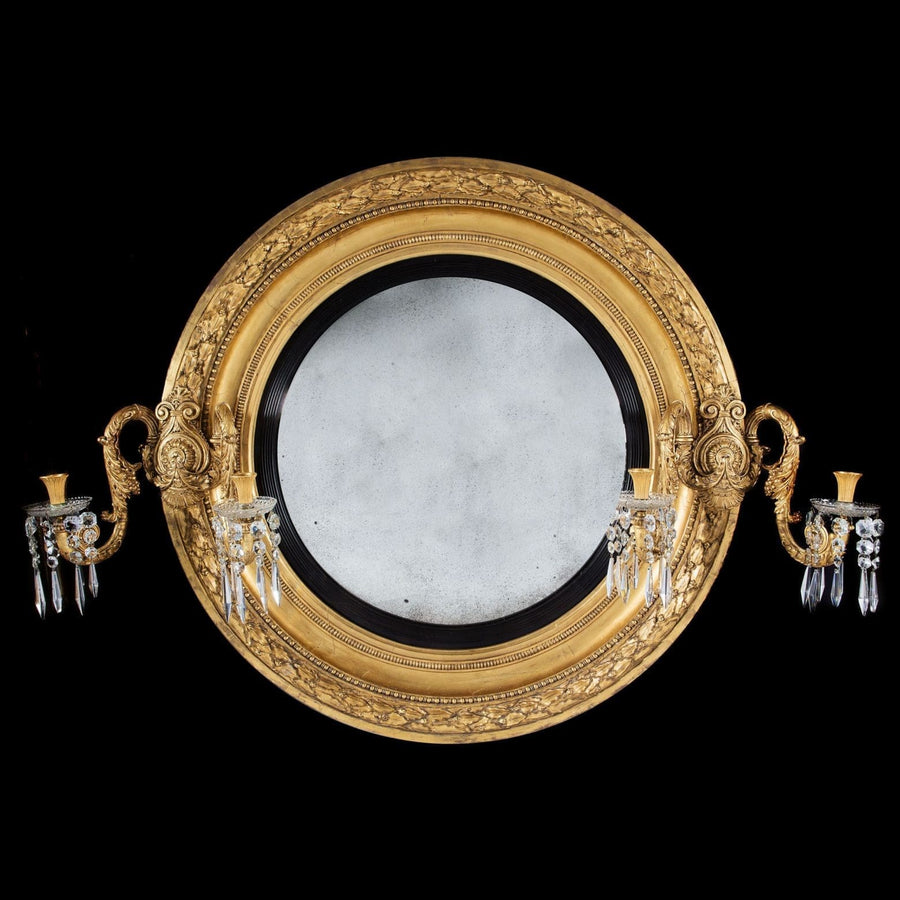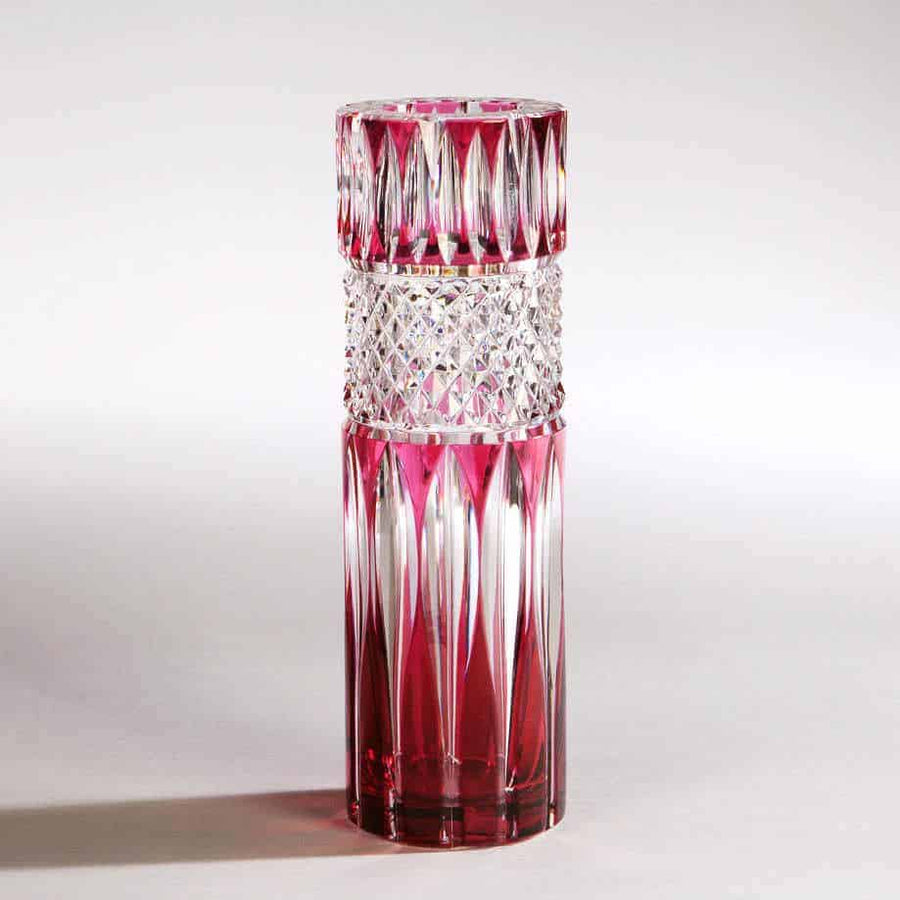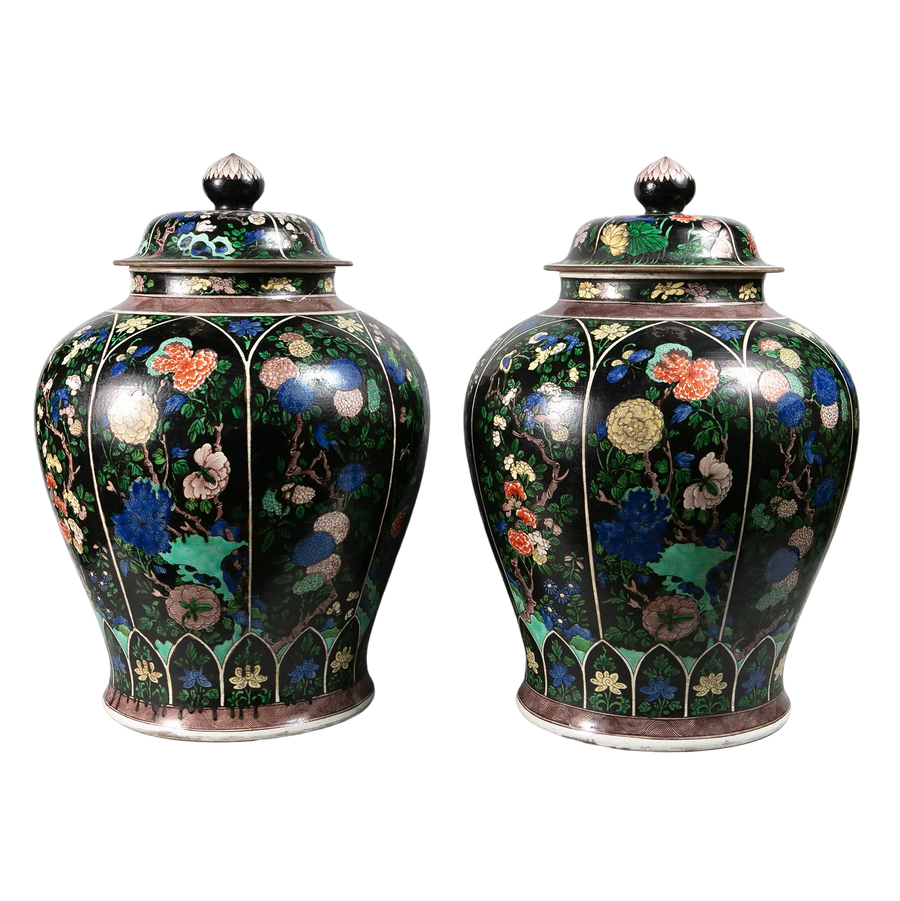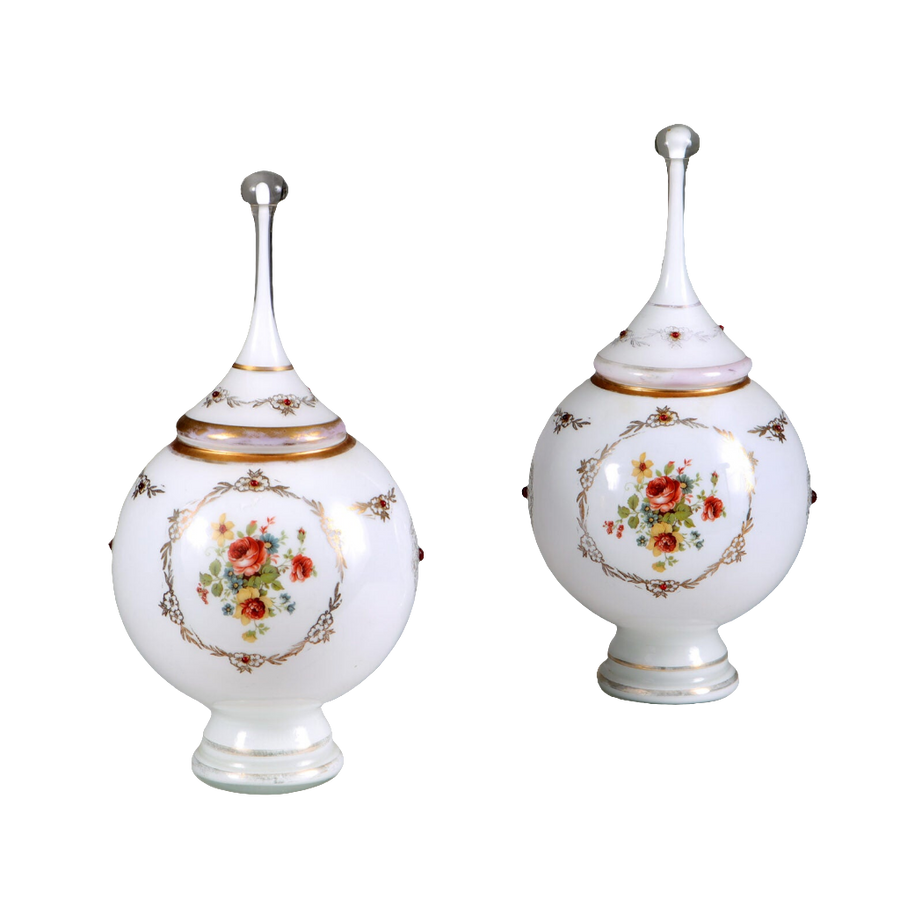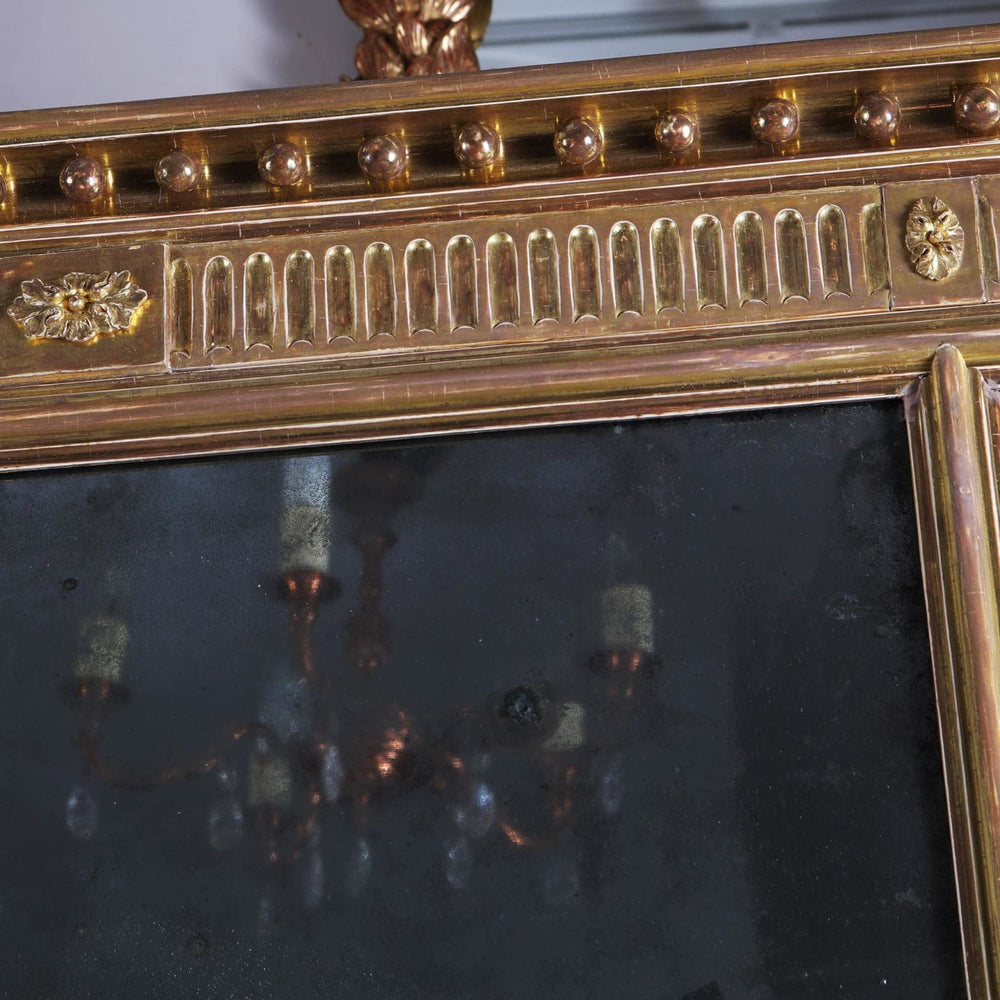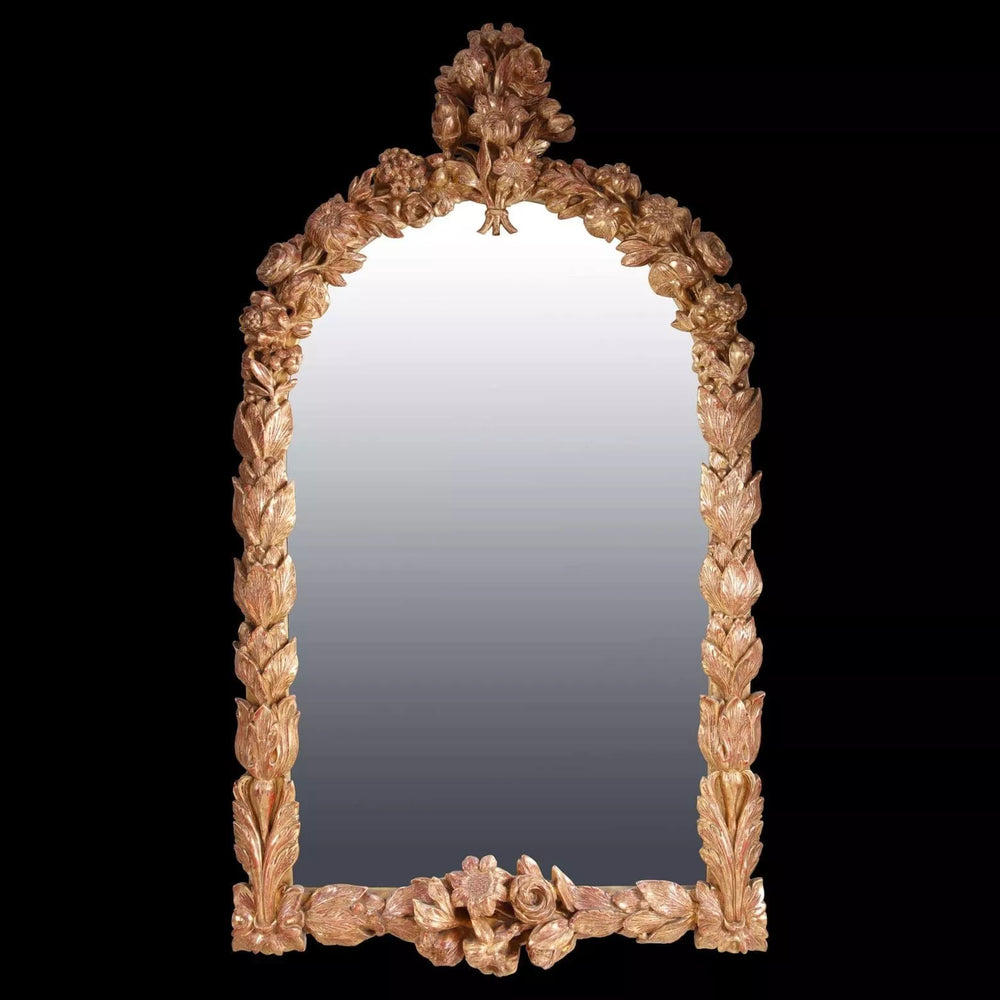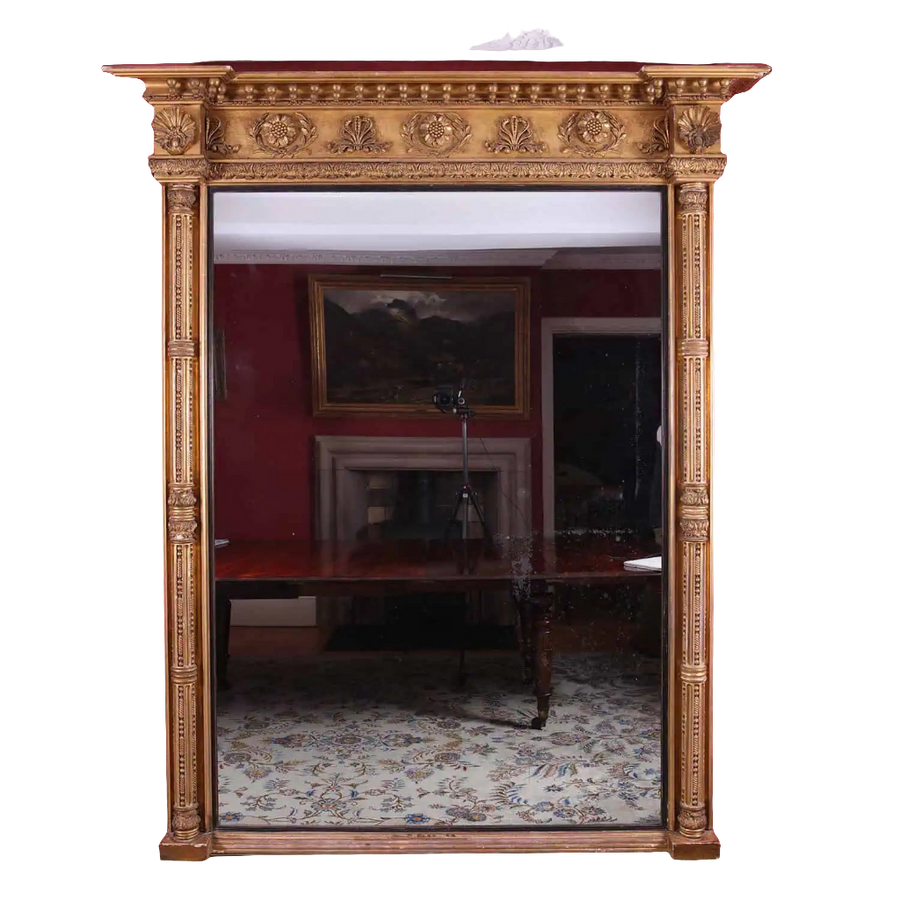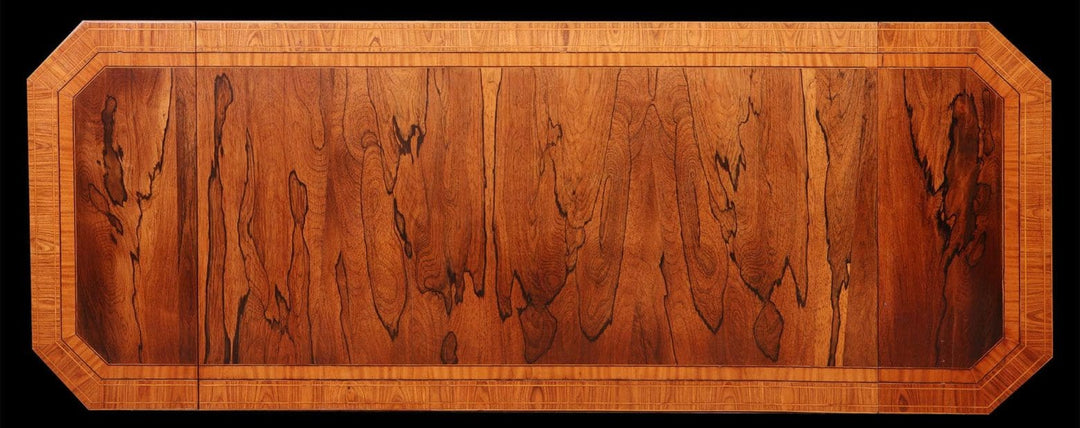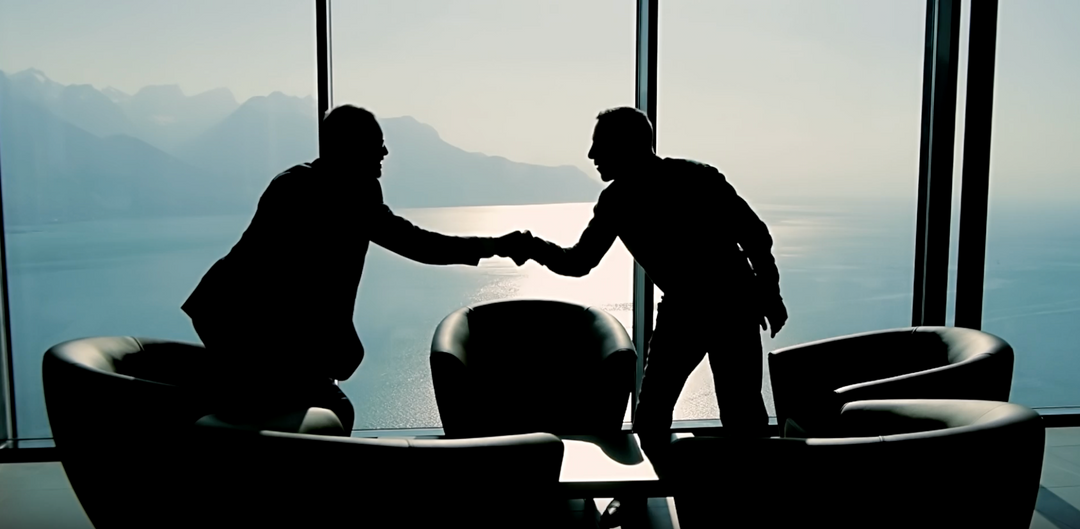Cased glass—also known as overlay glass—is a decorative technique in which layers of differently coloured glass are fused together, allowing artisans to carve, cut or engrave intricate designs that reveal the underlying layer. This process rose to prominence in the 19th century, reaching new artistic heights through developments in Bohemian glassmaking and continental European design.
Technique and Production
- The process begins with a base layer of molten coloured or clear glass.
- A second (or multiple) layer(s) of contrasting colour is applied while hot, forming a fused glass body.
- Artisans then cut or engrave the outer layer using tools such as copper wheels, revealing patterns, figures or geometric forms from beneath.
Copper Wheel Engraving
- This precise method uses rotating wheels coated with abrasive paste to incise designs into glass.
- Widely adopted across Europe in the 19th century for its capacity to render detailed imagery.
- Common motifs included floral garlands, hunting scenes, armorials, and mythological subjects.
Facet Cutting
- Facet cutting involved grinding flat geometric planes into the glass surface, enhancing light refraction and visual brilliance.
- Especially popular in luxury tableware and decorative vessels.
- Often combined with cased glass and engraving for multi-dimensional effect.
🌍 Regional Excellence
Bohemian Glass
- Produced in the regions of Bohemia and Silesia (modern-day Czech Republic and Poland).
- Known for vibrant colours, such as ruby, emerald, cobalt and amber glass.
- Bohemian workshops such as Harrach, Moser, and others specialised in heavy casing and bold engraving.
- Often exported across Europe and North America, becoming synonymous with prestige.
Val Saint Lambert (Belgium)
- Founded in 1826 near Liège, Val Saint Lambert emerged as a leader in luxury glassware.
- Excelled in overlay glass, facet cutting and wheel engraving, with distinctive clarity and colour.
- Collaborated with designers during the Art Nouveau and later Art Deco periods to produce stylised, geometric and architecturally influenced pieces.
🌀 Influence of Art Deco (c. 1920–1940)
- Art Deco aesthetics introduced angular motifs, stylised florals, and symmetry to glass design.
- Cased glass was adapted to suit modern interiors, often combining bold cuts, vivid colour contrasts and industrial precision.
- Val Saint Lambert and French studios such as Schneider and Lalique contributed to this trend, marrying traditional craftsmanship with modern sensibilities.
Cased glass during the 19th and early 20th centuries exemplifies the confluence of technological innovation and artisanal flair. Whether as ornate vases, goblets or display pieces, these objects illustrate the lasting appeal of layered colour, light manipulation, and detailed surface decoration.
Cased glass—also known as overlay glass—is a decorative technique in which layers of differently coloured glass are fused together, allowing artisans to carve, cut or engrave intricate designs that reveal the underlying layer. This process rose to prominence in the 19th century, reaching new artistic heights through developments in Bohemian glassmaking and continental European design.
Technique and Production
- The process begins with a base layer of molten coloured or clear glass.
- A second (or multiple) layer(s) of contrasting colour is applied while hot, forming a fused glass body.
- Artisans then cut or engrave the outer layer using tools such as copper wheels, revealing patterns, figures or geometric forms from beneath.
Copper Wheel Engraving
- This precise method uses rotating wheels coated with abrasive paste to incise designs into glass.
- Widely adopted across Europe in the 19th century for its capacity to render detailed imagery.
- Common motifs included floral garlands, hunting scenes, armorials, and mythological subjects.
Facet Cutting
- Facet cutting involved grinding flat geometric planes into the glass surface, enhancing light refraction and visual brilliance.
- Especially popular in luxury tableware and decorative vessels.
- Often combined with cased glass and engraving for multi-dimensional effect.
🌍 Regional Excellence
Bohemian Glass
- Produced in the regions of Bohemia and Silesia (modern-day Czech Republic and Poland).
- Known for vibrant colours, such as ruby, emerald, cobalt and amber glass.
- Bohemian workshops such as Harrach, Moser, and others specialised in heavy casing and bold engraving.
- Often exported across Europe and North America, becoming synonymous with prestige.
Val Saint Lambert (Belgium)
- Founded in 1826 near Liège, Val Saint Lambert emerged as a leader in luxury glassware.
- Excelled in overlay glass, facet cutting and wheel engraving, with distinctive clarity and colour.
- Collaborated with designers during the Art Nouveau and later Art Deco periods to produce stylised, geometric and architecturally influenced pieces.
🌀 Influence of Art Deco (c. 1920–1940)
- Art Deco aesthetics introduced angular motifs, stylised florals, and symmetry to glass design.
- Cased glass was adapted to suit modern interiors, often combining bold cuts, vivid colour contrasts and industrial precision.
- Val Saint Lambert and French studios such as Schneider and Lalique contributed to this trend, marrying traditional craftsmanship with modern sensibilities.
Cased glass during the 19th and early 20th centuries exemplifies the confluence of technological innovation and artisanal flair. Whether as ornate vases, goblets or display pieces, these objects illustrate the lasting appeal of layered colour, light manipulation, and detailed surface decoration.
Read More






